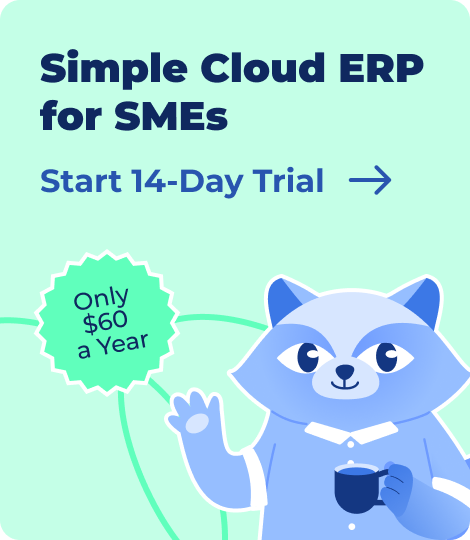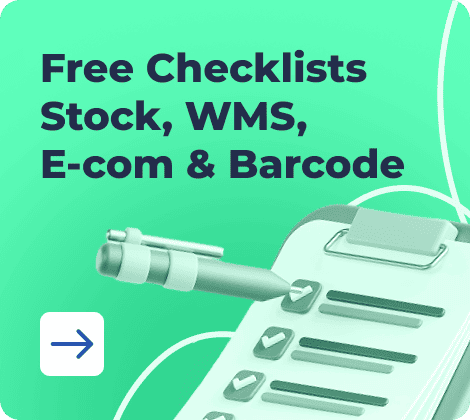Wondering how ERP software is changing business in India? By 2028, the ERP market is set to boom! In this guide, we’ll explain why many Indian businesses, especially online stores (D2C brands), are using ERP. We’ll break down the must-have ERP tools and features and help you pick the best, affordable software. Check out our top 20 chart to get started!
This updated 2025 guide gives you the inside scoop on the top ERP software for small to medium-sized businesses (SMEs) in India. We’ve done the research for you, so you can easily compare pricing, plans, and the latest features. All the information is current as of April 21, 2025.
- What Is ERP Software and Why Does It Matter for Indian SMEs?
- Why Indian Businesses Need ERP Software in 2025
- What Are the Ups and Downs of ERP Software for Your Small Business in India?
- What Are the Different Types of ERP Solutions?
- How Do You Pick the Best ERP Software for Your Indian Business?
- What Are the Must-Have Modules in ERP Software?
- Top 20 ERP Software for Your Business in 2025 — Let’s Compare!
- Frequently Asked Questions on the Best ERP Software in India
- List of Resources
What Is ERP Software and Why Does It Matter for Indian SMEs?
Think of ERP software as your business’s command center. It brings everything together — inventory, production, sales, and more — into one system. No more switching between different apps! You get all your data in one place, making it easy to control stock, manage manufacturing, track sales, and handle orders. Plus, many ERPs offer extra features like accounting, HR, marketing, and CRM.
For Indian SMEs, the right ERP is a game-changer. It simplifies how you work, especially in our fast-growing market. ERP helps you keep all your data organized, makes your business more efficient, and ensures you follow important rules like GST. With the right ERP, your business can grow faster and compete better in India’s busy economy. There are lots of ERP options made just for SMEs in India, so finding the perfect fit is key.
Why Indian Businesses Need ERP Software in 2025
Let’s look at the prospects of the ERP market in India and understand what needs of different industries ERP systems can meet.
ERP Market Growth in India (2016–2028)
According to Statista, the ERP market in India is exploding! It’s expected to grow by more than 10% each year until 2028. Why? Because more and more Indian businesses want to go digital. They’re looking for one software system to handle everything instead of juggling many different apps.
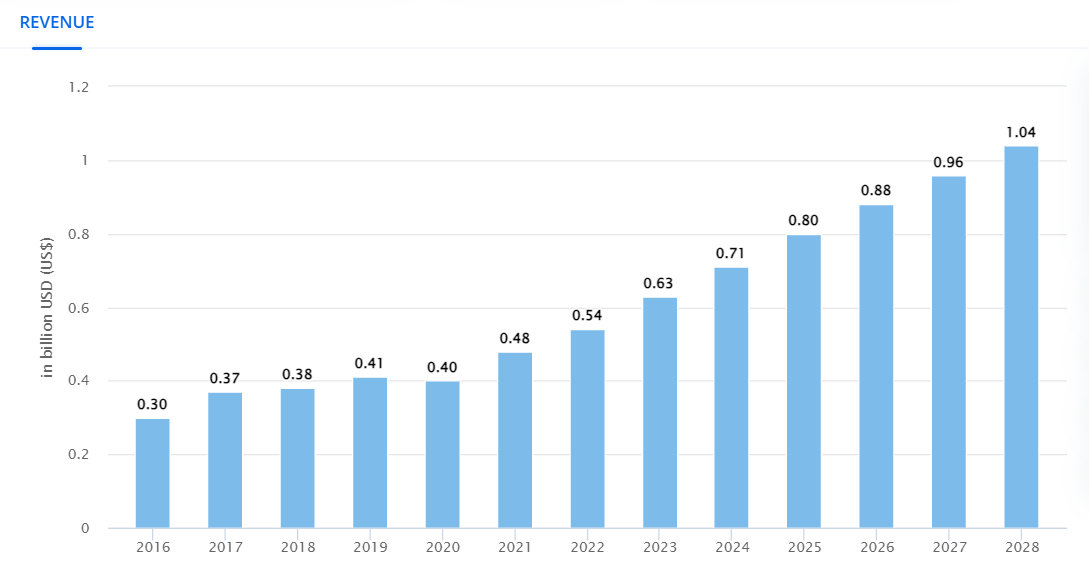
Small and medium-sized businesses (SMEs) in India have special needs. They need to make operations smoother, work more efficiently, manage stock, and follow rules like GST. ERP software helps SMEs do all this by putting everything in one place. It lets them grow quickly, make fewer mistakes, and make smart decisions.
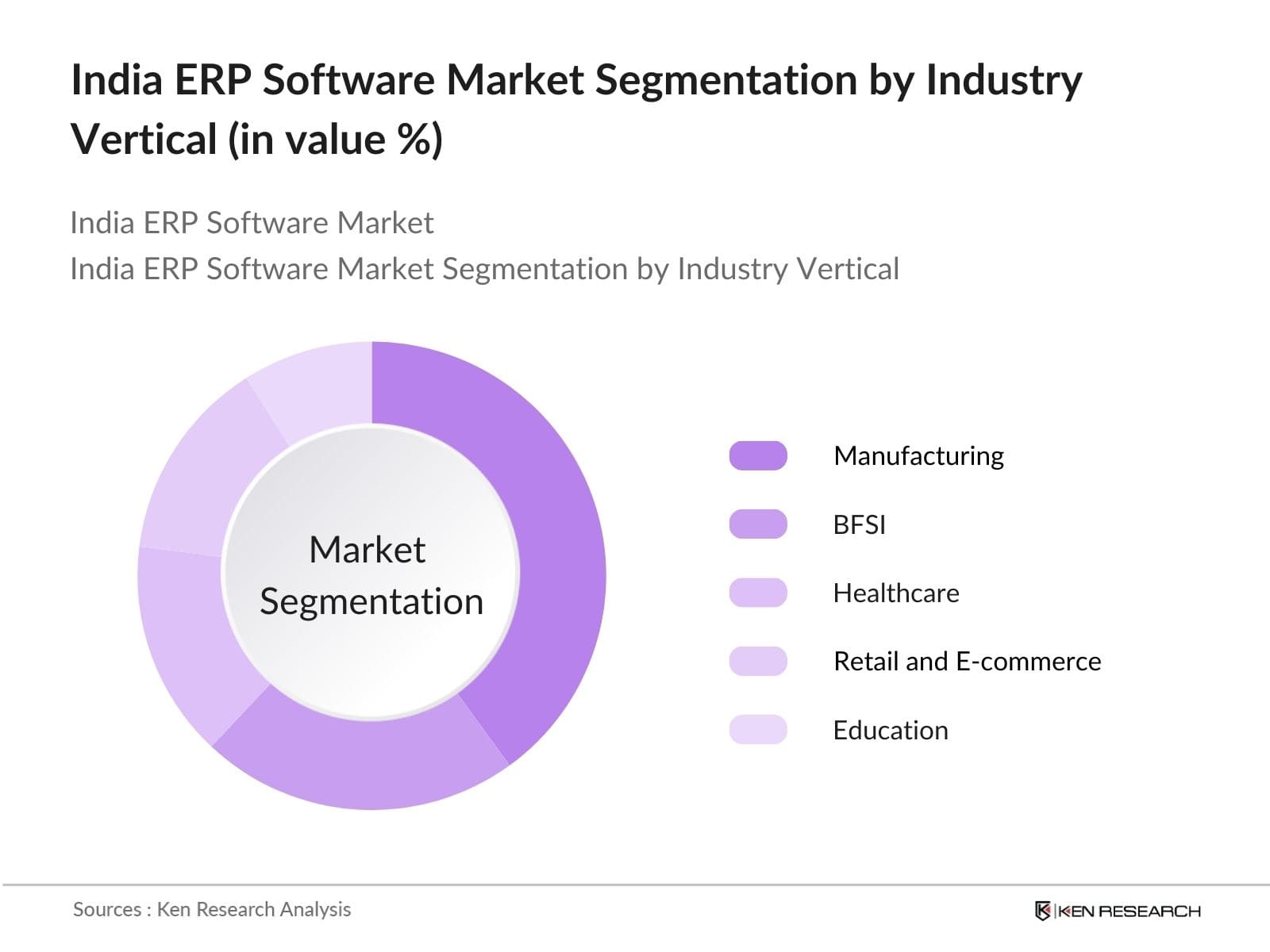
Many types of Indian businesses are seeing big wins with ERP. Manufacturers use it to manage production and stock, while retailers track inventory and sales. Online stores and D2C brands use ERP to connect their website, warehouses, and orders. The Times of India reports that D2C businesses in India are growing rapidly — they made $4 billion in 2022 and are expected to hit $100 billion by 2025! That’s why they really need ERP to stay organized and efficient. Basically, ERP saves time and money, helping Indian businesses thrive in today’s digital world.
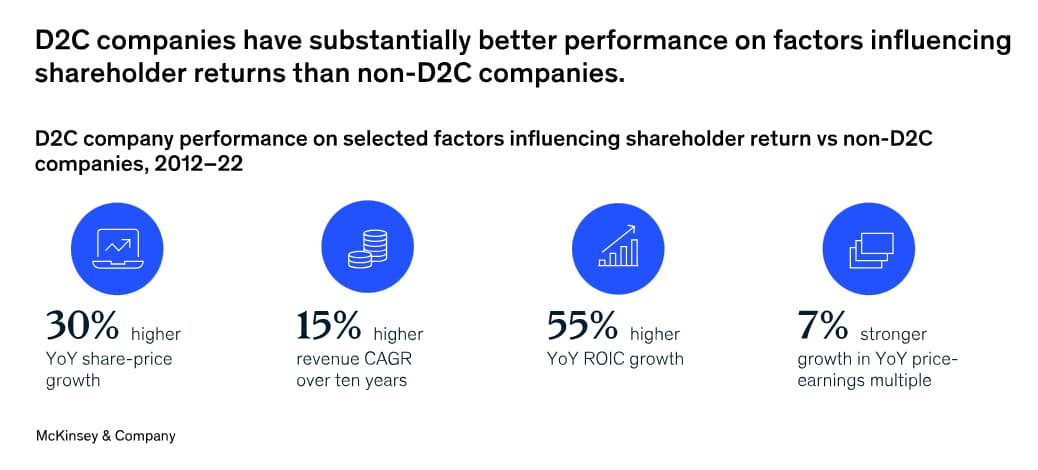
🧊 4 Free Inventory Ckecklists
Learn how to manage stock, set up your warehouse, track barcodes, and build product cards for e‑commerce — even if you’ve never done it before
✅ Inventory management
✅ Warehouse setup
✅ Barcode tracking
✅ E-commerce product cards
Which Indian Industries Are Seeing Big Wins with ERP in 2025?
Lots of Indian industries are finding that ERP systems in India are a game-changer. Let’s see where the biggest benefits are happening:
- Automotive Manufacturing: India’s car industry is booming, and ERP software is helping them keep up. We’re talking about managing super complicated supply chains, sticking to production schedules, and making sure everything is top quality. The Economic Times says that companies using ERP tools have seen some amazing results: a 40% jump in uptime, their equipment lasts 30% longer, and their inventory turns over way faster — going from 15–16 times to 23–24 times a year!
- Textile Industry: India has a huge history in textiles, and ERP solutions are helping this traditional industry move into the future. With ERP systems, textile businesses can manage stock, plan production like pros, and get their products out the door more efficiently. Many big players in the industry are switching to ERP software to cut waste, speed up production, and make international trade smoother.
- Pharmaceuticals: Keeping everything in check is super important in the pharma industry. ERP in India helps companies track every batch, manage stock, and keep all the paperwork in order, which is crucial for following strict rules from the Central Drugs Standard Control Organisation (CDSCO). CDSCO is actually investing heavily in digital tools to help the industry go digital, using things like the Digital Drugs Regulatory System (DDRS) to make sure everyone’s following the rules.
- Fast-Moving Consumer Goods (FMCG): Think about all those everyday products — snacks, toiletries, you name it. FMCG companies use top ERP software in India to manage their huge distribution networks, keep track of all that inventory, and guess what’s going to sell next. With a good ERP system, they get real-time updates on stock and sales, making their operations super smooth.
What Are the Ups and Downs of ERP Software for Your Small Business in India?
Before you jump into getting ERP solutions for your small business, let’s take a quick look at what’s great and what might be tricky. Think of it as a little pros and cons list to help you decide if ERP systems in India are the right move for you.
| The Good Stuff | Things to Keep in Mind |
✅ Save Time and Focus on Strategy: With the best ERP software in India, say goodbye to endless repetitive tasks! Let the digital tools do the heavy lifting, so you can focus on growing your business and planning for the future. |
❌ It’s an Investment: Getting set up with ERP software takes time, money, and effort. It’s a big step, and not every entrepreneur is ready for the initial challenge. |
✅ Cut Costs and Secure Your Finances: Over time, using ERP tools can save you money. You’ll need fewer staff for routine work, prevent theft, and get a much better handle on your financials. Neytt, a carpet manufacturer, uses Kladana to track key metrics for production, purchasing, and sales. With financials under control and clear project profitability, they’ve reduced manual workload and optimized resource allocation. |
❌ One-Size Doesn’t Fit All: Most ERP solutions are pretty general. If your business has really unique needs and requires super customized software, a standard ERP might not be the perfect fit. |
✅ Everything in One Place: ERP systems bring all your vital operations into a single, easy-to-use app. Plus, your data is stored safely in the cloud, so you don’t have to worry about losing it. |
❌ Training and Change Management: Getting your team on board with new ERP software isn’t always easy. There’s training involved, and some employees might resist the change. Our client Metako faced this, but they found ways to make it work. |
✅ See Your Business Clearly: With transparent processes, dashboards, and reports from your ERP software, you can keep an eye on how your business is doing. You’ll see your weak spots and strengths plain as day. Wonder why production is slow? Want to know your best-selling products? It’s all right there. |
|
✅ Keep Your Data Safe: Forget about paper notebooks and messy Excel sheets that can easily get lost or copied. ERP in India helps secure your important data, keeping it out of the wrong hands. |
|
✅ Real-Time Updates: Get instant updates and synchronization with ERP software. Low on supplies? You’ll get a notification. Out of stock? Your online store knows too. And all your incoming and outgoing payments? Right there in a chart, so you’re always in the loop. |
What Are the Different Types of ERP Solutions?
When it comes to ERP, you’ll typically find three main types, based on how they’re set up. Choosing the right type depends on your business size, industry, budget, and how much control you want over your data. Cloud is often the easiest and most affordable for smaller businesses, while larger companies might prefer on-premises or hybrid setups.
Cloud‑based ☁️ |
On‑premises 🏭 |
Hybrid 🔁 |
The most popular option. It’s hosted online, so you just need an internet connection to access it from any device. Think of it as renting your software. Great for flexibility and usually easier on the budget. |
This means the ERP software is installed on your company’s own computers and servers. It gives you more control over your data, but it’s generally pricier and requires your own IT team to manage. Often chosen by larger corporations with strict security needs. |
A mix of both. Some parts of the ERP are on your own servers, while others are in the cloud. Good for keeping sensitive info secure on-site while still using cloud features for things like reporting. |
How Do You Pick the Best ERP Software for Your Indian Business?
Choosing the right ERP software in India is a big deal! It can seriously streamline your business, so let’s walk through the key things to consider, especially if you’re operating in India.
Let’s Talk Money — Pricing
- No Surprises: You want pricing that’s crystal clear. Watch out for hidden fees or extra charges for things you need. Compare yearly vs. monthly costs, per-user fees, and setup costs. You need to be looking for a solution amongst the ERP solutions for small businesses.
- Getting Your Money’s Worth: Don’t just go for the cheapest! Make sure the ERP tools match what you need. The priciest option isn’t always the best, either. Think about the long-term value and the return on your investment (ROI).
Making it Work in India — Localization
- GST is Key: Your ERP system in India has to play nice with GST (Goods and Services Tax) — we’re talking e-invoicing and e-way bills.
- Local Help Matters: Can the vendor give support in local languages? Do they understand how things work in your region? It’s a big plus.
- Plays Well with Others: Check if the ERP software can connect with local payment systems, delivery services, and other Indian market must-haves.
Got Your Back? — Support
- Always There When You Need Them: See how quickly they respond. What kind of support do they offer? Phone, email, chat, or a dedicated person?
- People Love Them? Look for reviews and what other users are saying about their support. Good help is essential, especially when you’re just getting started.
- Training for Your Team: Do they offer training and onboarding to make sure your team can actually use the ERP tools effectively?
What Do You Really Need? — Modules
- Just the Essentials: Figure out the core stuff you need. Like inventory, orders, production, or CRM. Don’t pay for features you won’t touch.
- Grows With You: Can the ERP software handle your growth? Can you easily add more users or features as your business expands?
- Make it Yours: If you’ve got unique workflows, can you customize the ERP system or connect it to other apps you use?
Extras That Make Life Easier — Additional Key Features
- Understand Your Numbers: Dashboards and reports should be easy to use and tweak. That’s where ERP analytics really shines.
- Connect Everything: Make sure it works with what you’re already using. Shopify? Xero? Check for those integrations . API access is great for adding your own tools, too.
- Easy to Learn: You want something your team can pick up in days, not weeks. Even if you’re tech-savvy, your employees might struggle with a clunky system.
What Are the Must-Have Modules in ERP Software?
Let’s quickly look at the main building blocks of ERP software. These are the modules, and you won’t necessarily need all of them. It really depends on your specific business needs.
Inventory Management Module
Think of this as keeping tabs on everything you have in stock. You’ll usually get:
- A catalogue with all your items, including different versions, prices, and bundles;
- Real-time updates on stock levels, synced with sales and production;
- Tools to generate barcodes, create custom labels, and manage prices;
- Alerts when stock is running low, plus automatic reordering;
- Tracking by serial numbers, batches, or SKUs.
Warehouse Management Module
If you have a warehouse (or several), this is where the magic happens:
- Organization with bin locations;
- Smooth operations for receiving, moving, and shipping items;
- Regular inventory counts (stock takes);
- Tools for stock planning and analysis;
- Barcode scanning to speed things up.
Manufacturing Module
For those making things:
- Full control of the production process, from planning to finished goods;
- Management of all the supplies you need;
- Cost estimation for labour and materials, and figuring out the cost of each item;
- Tracking of each stage of production and who’s working on what;
- Managing work-in-progress (WIP);
- Managing multi-level BOMs.
Procurement Module
Handling all your purchasing:
- Creating and managing purchase orders;
- Keeping track of supplier invoices and documents;
- Managing incoming deliveries and returns.
Order Management Module
For keeping sales running smoothly:
- Detailed records of sales orders;
- Generating invoices and other sales documents;
- Tracking shipments and returns from customers;
- Analyzing sales data with charts and funnels;
- Figuring out your best (and worst) selling products.
Customer Relationship Management (CRM) Module
Keeping your customers happy:
- Organizing your contacts (customers, suppliers, partners) into groups.
- Tracking where each contact is at (new, regular, etc.).
- Keeping a record of all your interactions.
Top 20 ERP Software for Your Business in 2025 — Let’s Compare!
We’ve put together a list of the top 20 ERP solutions for SMEs and really dug into the details — checking out modules and features. Of course, we know affordability is a big deal.
Everything you see here comes straight from the companies themselves — their websites, help pages, social media, and conversations with their support teams. And just to be clear, all this info is up-to-date as of April 21, 2025. So, let’s talk about finding the best ERP software in India.
| Software Name | Price (Yearly) | Overall Score | Business Size | Free Trial | Inventory | Warehousing | Manufacturing | Procurement | Order | CRM | Ecommerce | Integrations | Free support | Accounting | HR | Marketing | Deployment | ||
| Cloud | Desktop | Mobile | |||||||||||||||||
$60–748 |
⭐⭐⭐⭐⭐ (5.0) |
Small to Medium |
14 Days |
✅ |
✅ |
✅ |
✅ |
✅ |
✅ |
✅ |
✅ |
✅ |
❌ |
❌ |
❌ |
✅ |
❌ |
❌ |
|
$60–2,400+ |
⭐⭐⭐⭐ (4.8) |
Small to Medium |
14 Days |
✅ |
✅ |
✅ |
✅ |
✅ |
✅ |
✅ |
✅ |
✅ |
✅ |
✅ |
✅ |
✅ |
❌ |
❌ |
|
$345–517+ per user |
⭐⭐⭐⭐ (4.7) |
All Sizes |
15 Days |
✅ |
✅ |
✅ |
✅ |
✅ |
✅ |
✅ |
✅ |
❌ |
✅ |
✅ |
✅ |
✅ |
✅ |
✅ |
|
No data |
⭐⭐⭐⭐ (4.7) |
Medium to Large |
Live Demo Only |
✅ |
✅ |
✅ |
✅ |
✅ |
✅ |
✅ |
✅ |
❌ |
✅ |
✅ |
✅ |
✅ |
❌ |
✅ |
|
$240–480 per user |
⭐⭐⭐⭐ (4.6) |
Small to Medium |
30 Days |
✅ |
✅ |
✅ |
✅ |
✅ |
✅ |
✅ |
✅ |
✅ |
✅ |
❌ |
❌ |
✅ |
❌ |
❌ |
|
$705–4,227 |
⭐⭐⭐⭐ (4.6) |
Small to Medium |
7 Days |
✅ |
✅ |
✅ |
✅ |
✅ |
✅ |
❌ |
✅ |
✅ |
✅ |
❌ |
❌ |
✅ |
❌ |
✅ |
|
$512–1,244 per user |
⭐⭐⭐⭐ (4.6) |
Small to Medium |
30 Days |
✅ |
✅ |
❌ |
✅ |
✅ |
✅ |
✅ |
✅ |
✅ |
✅ |
✅ |
✅ |
✅ |
❌ |
✅ |
|
No data |
⭐⭐⭐⭐ (4.6) |
Medium to Large |
Demo Only |
✅ |
✅ |
✅ |
✅ |
✅ |
✅ |
✅ |
✅ |
✅ |
✅ |
❌ |
❌ |
✅ |
❌ |
✅ |
|
$864+ per user |
⭐⭐⭐⭐ (4.5) |
Small to Medium |
7 Days |
✅ |
✅ |
✅ |
✅ |
✅ |
✅ |
✅ |
✅ |
✅ |
✅ |
❌ |
✅ |
✅ |
✅ |
✅ |
|
No data |
⭐⭐⭐⭐ (4.5) |
Medium to Large |
30 Days |
✅ |
✅ |
✅ |
✅ |
✅ |
✅ |
✅ |
✅ |
❌ |
✅ |
✅ |
✅ |
✅ |
✅ |
✅ |
|
$11,940–14,940+ |
⭐⭐⭐⭐ (4.5) |
Medium to Large |
14 Days |
✅ |
✅ |
✅ |
✅ |
✅ |
✅ |
✅ |
✅ |
✅ |
✅ |
✅ |
✅ |
✅ |
❌ |
✅ |
|
No data |
⭐⭐⭐⭐ (4.4) |
Medium to Large |
7 Days |
✅ |
✅ |
✅ |
✅ |
✅ |
✅ |
❌ |
✅ |
❌ |
✅ |
✅ |
❌ |
✅ |
✅ |
❌ |
|
No data |
⭐⭐⭐⭐ (4.4) |
Medium to Large |
Demo Only |
✅ |
✅ |
✅ |
✅ |
✅ |
✅ |
✅ |
✅ |
❌ |
✅ |
✅ |
❌ |
✅ |
✅ |
✅ |
|
$350–1,150 perpetual |
⭐⭐⭐⭐ (4.3) |
Small to Medium |
7 Days |
✅ |
✅ |
✅ |
✅ |
✅ |
✅ |
✅ |
✅ |
❌ |
✅ |
✅ |
✅ |
✅ |
✅ |
✅ |
|
$840–1,200 per user |
⭐⭐⭐⭐ (4.3) |
Medium to Large |
30 Days |
✅ |
✅ |
✅ |
✅ |
✅ |
✅ |
✅ |
✅ |
❌ |
✅ |
✅ |
✅ |
✅ |
✅ |
✅ |
|
$282+ |
⭐⭐⭐⭐ (4.2) |
Small to Medium |
14 Days |
✅ |
✅ |
✅ |
✅ |
✅ |
✅ |
❌ |
❌ |
✅ |
❌ |
✅ |
❌ |
✅ |
❌ |
❌ |
|
No data |
⭐⭐⭐⭐ (4.1) |
Small to Medium |
Demo Only |
✅ |
✅ |
✅ |
✅ |
✅ |
✅ |
✅ |
✅ |
✅ |
✅ |
✅ |
✅ |
✅ |
❌ |
❌ |
|
No data |
⭐⭐⭐⭐ (4.1) |
Medium to Large |
Demo Only |
✅ |
✅ |
✅ |
✅ |
✅ |
✅ |
❌ |
✅ |
❌ |
✅ |
✅ |
❌ |
✅ |
❌ |
✅ |
|
No data |
⭐⭐⭐⭐ (4.0) |
Small to Medium |
Demo Only |
✅ |
✅ |
✅ |
✅ |
✅ |
✅ |
✅ |
✅ |
✅ |
✅ |
✅ |
✅ |
✅ |
✅ |
✅ |
|
$630–1,890 perpetual |
⭐⭐⭐ (3.8) |
Small to Medium |
7 Days |
✅ |
✅ |
✅ |
✅ |
✅ |
✅ |
❌ |
✅ |
❌ |
✅ |
❌ |
❌ |
❌ |
✅ |
❌ |
|
Best ERP Tools List
Looking for affordable ERP software? You’ll want to check out Kladana, Eresource, Expand ERP, ERPNext, Odoo, and Marg. Good news — most ERP systems these days are in the cloud, which means you don’t have to install anything! But keep in mind, Marg is a download-only option, and PACT ERP, Sage 300, IFS, and Microsoft Dynamics 365 offer you a choice of how they’re set up. As for user-friendliness, almost all of them are pretty sleek, except for Marg, TallyPrime, and Ramco.
When you’re picking out your perfect ERP solution, here’s what to keep an eye on:
- Pricing: Some companies aren’t upfront about costs, and others can be pretty pricey. PACT ERP, for example, only shows you their interface during a demo call.
- Who It’s for: Some ERP tools are made for specific industries. Tranzact is great for manufacturing, and TallyPrime is all about accounting.
- What You Actually Need: Don’t go overboard with modules you might never use. That HR module that sounds nice? Maybe hold off on paying extra for it unless you really need it now.
- Support: Good support is crucial! If a company limits how much help you can get, that’s a red flag.
Once you’ve got a few favorites in mind, definitely schedule those demos and try out the free versions. That’s the best way to see if you really like the software.
Kladana — Overview
![]()
Cloud end-to-end ERP designed for SMEs. It helps entrepreneurs digitize their businesses smoothly, and automate inventory, production, and sales in one app. Kladana is a trusted solution which history began 18 years ago. D2C companies, manufacturers, wholesalers, retailers, and distributors are the segments that find the software handy. Kladana offers a free 14-day trial & a free price plan for those who hesitate or don’t need many features for a start.
It takes a newcomer 15 minutes to understand how the app works. A user gets 1–3 onboarding sessions depending on the chosen plan and free support which gives a reply within 5–15 minutes during business hours and customize documents within 2–7 working days. One can use API to customize Kladana according to their need. Those who sell online, can use Shopify or WooCommerce integration, or install Online Order App that helps create product catalogues with different prices.
| Pros | Cons |
✅ Affordable — from $60 a year, discounts up to 30% with a yearly plan, 14-day free trial |
❌ No accounting, HR, or marketing modules |
✅ Production module |
❌ No on-premise or hybrid solution |
✅ Ecommerce module — Shopify and Woocommerce integrations, Online Order App, and multiple sales reports |
|
✅ Custom integrations with API |
|
✅ Free onboarding and support for all clients with paid plans |
|
✅ User-friendly interface & and a quick start |
|
✅ In-depth analytics and reports |
Available Plans
Start
$60/annuallySuitable for those who wish to test Kladana features. 100 MB data storage, unlimited items, counterparties, and transactions. Support is available via email and chat.
-
Growth
$24/monthly
$202/annuallyA good one for a small business: 2+ users, 2 companies, 0.5+ GB of data storage & unlimited items, transactions, and counterparties. Custom print templates, custom fields and CRM are available. Production and automatization via workflows are available as options.
-
Business 🌟
$49/monthly
$412/annuallyThe most popular plan: 5+ users, 5 companies, 2+ GB of data storage. All features of the Basic plan plus custom fields and user access rights. User access rights and unlimited support and onboarding.
-
Business Plus
$89/monthly
$748/annuallySuitable for a big company: 10+ users, unlimited companies, 10+ GB of data storage. Workflows are included.
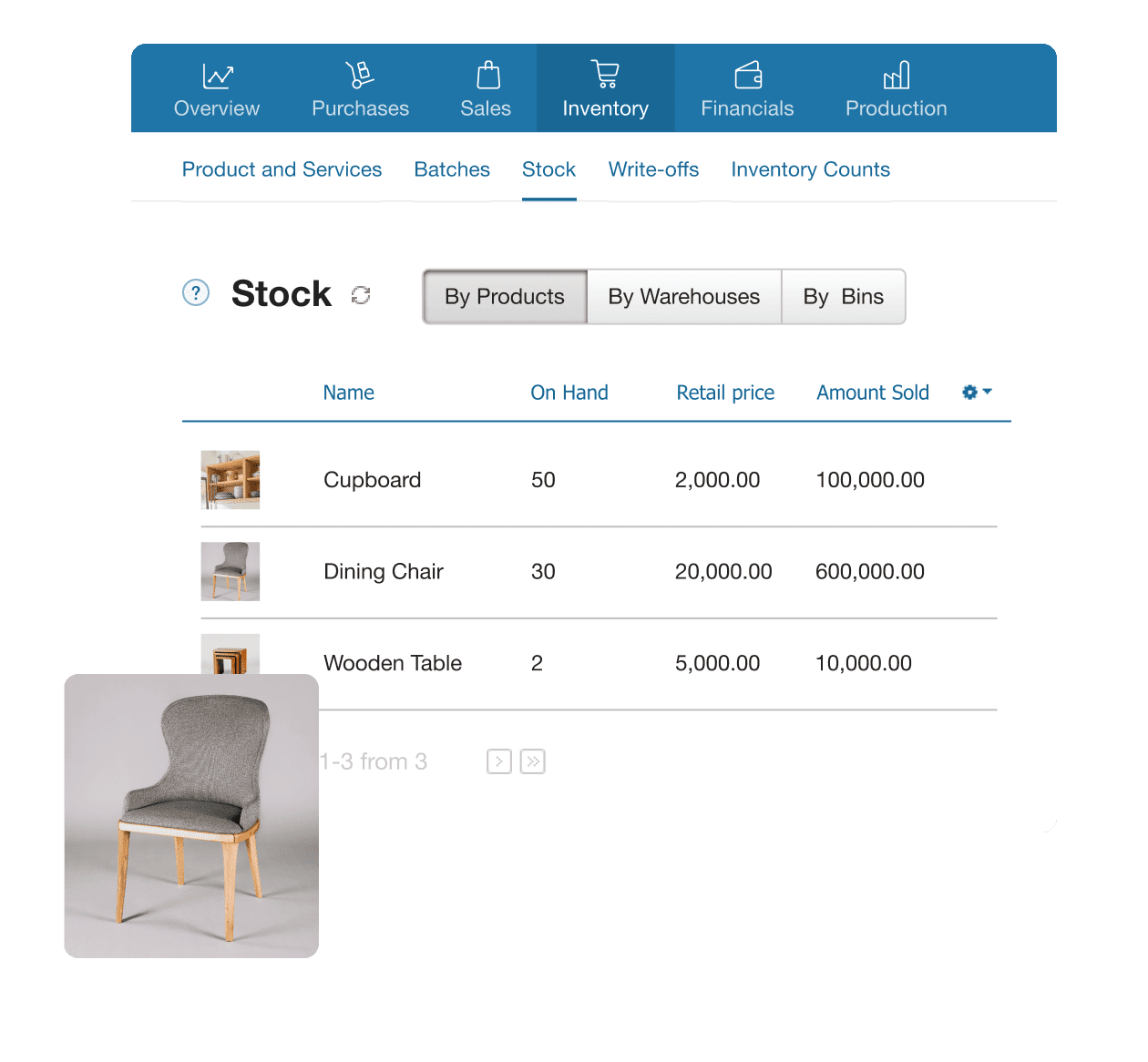
🚀 Elevate your business with modern ERP
Kladana gives you modules that matter — inventory, manufacturing, orders & tax — in one simple app
ERPNext — Overview
![]()
ERPNext claims that it is the most agile ERP solution around the globe. Suits wholesalers, retailers & manufacturers. Multi-currency accounting & 80 languages are supported.
| Pros | Cons |
✅ Affordable — from $5 per month. Free trial avaialble |
❌ While ERPNext has a strong open-source community, official support for the free version is limited |
✅ Has additional modules: project & asset management, and website building |
❌ While thorough, much of ERPNext’s documentation is developer-centric, lacking practical, step-by-step guides for finance, HR, or operations managers setting up their modules |
✅ Billing, banking, auto-invoicing & other accounting tools |
❌ Although customization is possible via Frappe Framework, it often requires coding in Python or JS for deeper changes (e.g., conditional logic, API integrations, UI customizations) |
✅ Integrations with Amazon, Shopify, Google Contracts, Woocommerce, PayPal, etc. |
|
✅ Solutions for different industries: services, healthcare, etc. |
Available Plans
Free
No free plan is available
For Small Business
From $5/monthly
0.5 hrs CPU time
0.2GB database
2GB storage
For Mid to Large Enterprises
From $200/monthly
2 vCPUs
4GB memory
25GB expandable storage
Some features are extra-chargeable:
- Sites on private benches — from $25/monthly
- Standard support — from $50/monthly
- Premium dedicated hosting — from $400/monthly
- Hybrid hosting — from $1,000/monthly
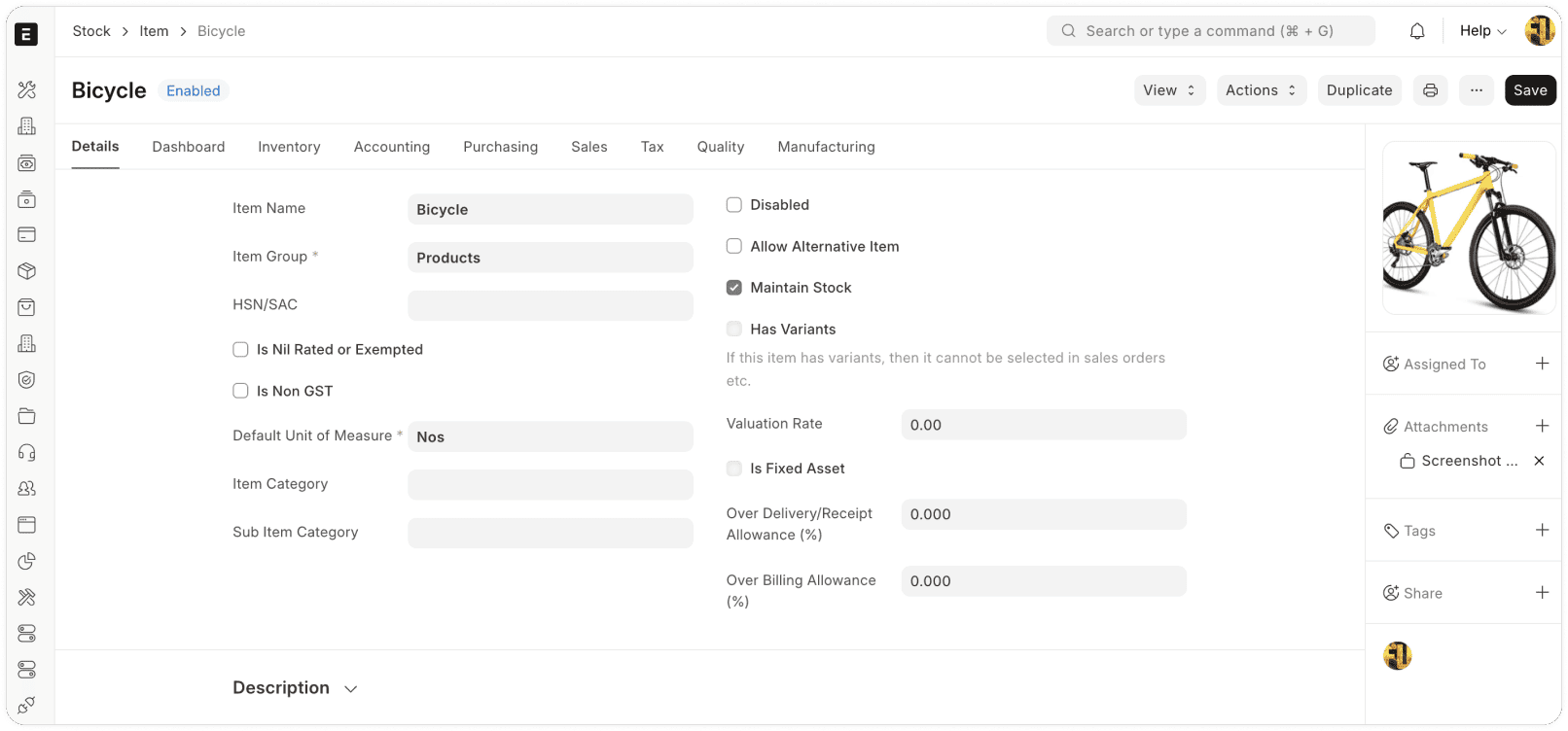
Odoo — Overview
![]()
Odoo is a modular, open-source ERP platform that covers a wide range of business needs, from CRM and inventory to manufacturing, accounting, and HR. It is known for its flexibility, scalability, and competitive pricing, especially for SMEs. Businesses can start with a single free app and scale as needed.
| Pros | Cons |
✅ One free app available |
❌ Additional features require upgrading to paid plans |
✅ Feature-rich and modular |
❌ Costs scale with number of users and apps |
✅ Free trial of all modules |
❌ Custom implementation may increase total cost |
✅ Large app ecosystem and integrations (e.g., e-commerce, payment, shipping, marketing) |
❌ Some advanced features require technical setup |
Available Plans
One App Free
Free
Access to any one Odoo app (e.g. Invoicing, CRM, Inventory, etc.)
Additional apps require upgrade to paid plan
Standard Plan
$35/user monthly
All Odoo apps and modules (Sales, CRM, Inventory, MRP, Accounting, HR, etc.)
Optional implementation services and third-party integrations
Custom
$54/user monthly
All modules + custom developments and advanced configurations
Custom development, hosting options, and premium support
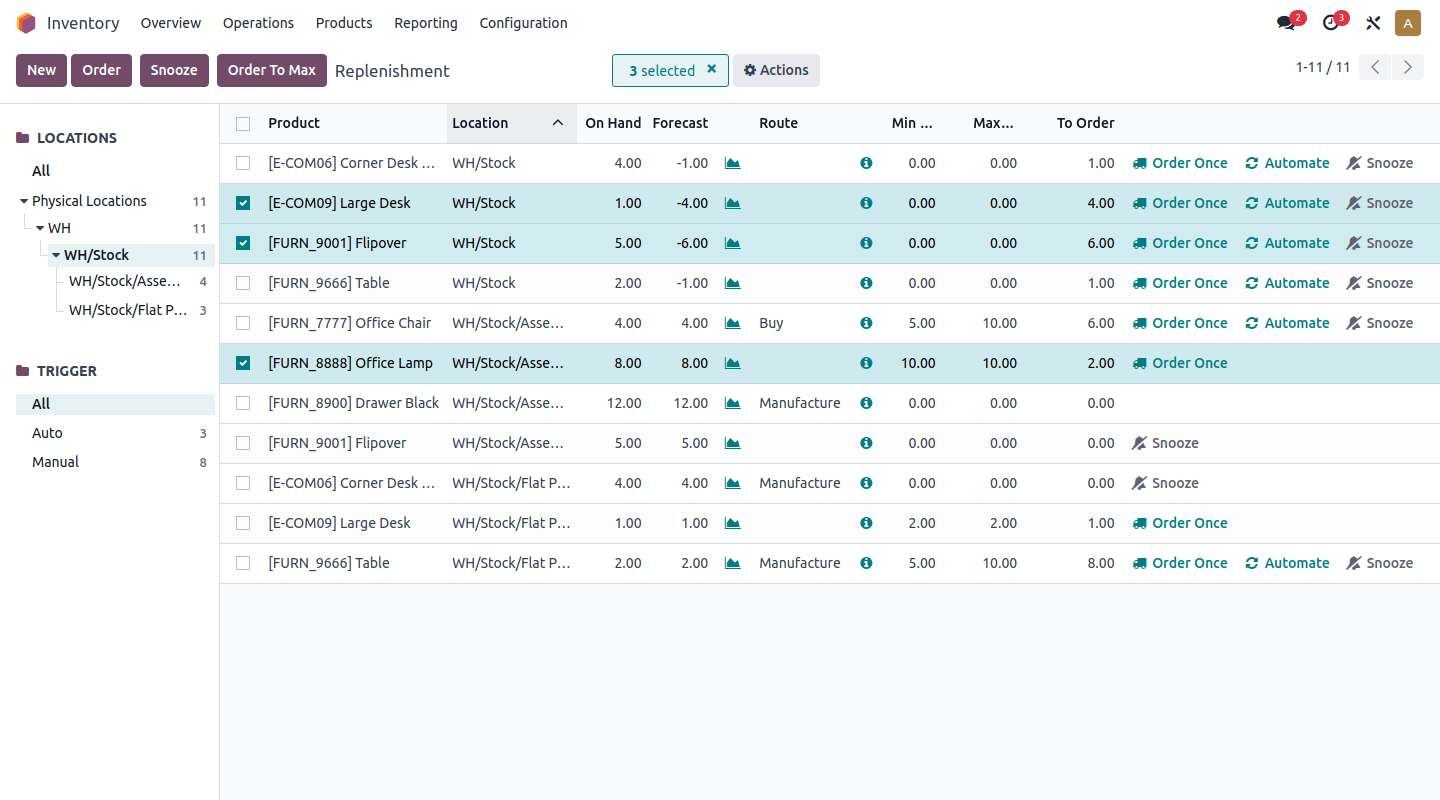
NetSuite ERP — Overview
![]()
An all-in-one cloud solution that helps one run inventory, manufacturing, accounting, warehousing, supplies, etc. Oracle ecosystem started with sales software, then it was followed by HR & marketing solutions, and eventually, it became ERP.
| Pros | Cons |
✅ Has all basic modules |
❌ The basic support package provided by NetSuite includes limited assistance, often necessitating the purchase of premium support services for more comprehensive help |
✅ Provides solutions for various industries: apparel, education, media, healthcare, IT, nonprofit, HoReCa, etc. |
❌ While NetSuite offers customization capabilities, tailoring the system to specific business needs can be complex and may require specialized technical expertise |
✅ Suits all types of businesses: as a startup, as a large enterprise |
❌ The price is unknown which means that the software is likely costly |
✅ Provides education services to the users |
|
✅ Customizable dashboards & reports |
|
✅ Suits global companies: 27 languages & 190 currencies are available |
Available Plans
- No free module
- Annual license
The fee is not fixed. It depends on the number of users & modules.
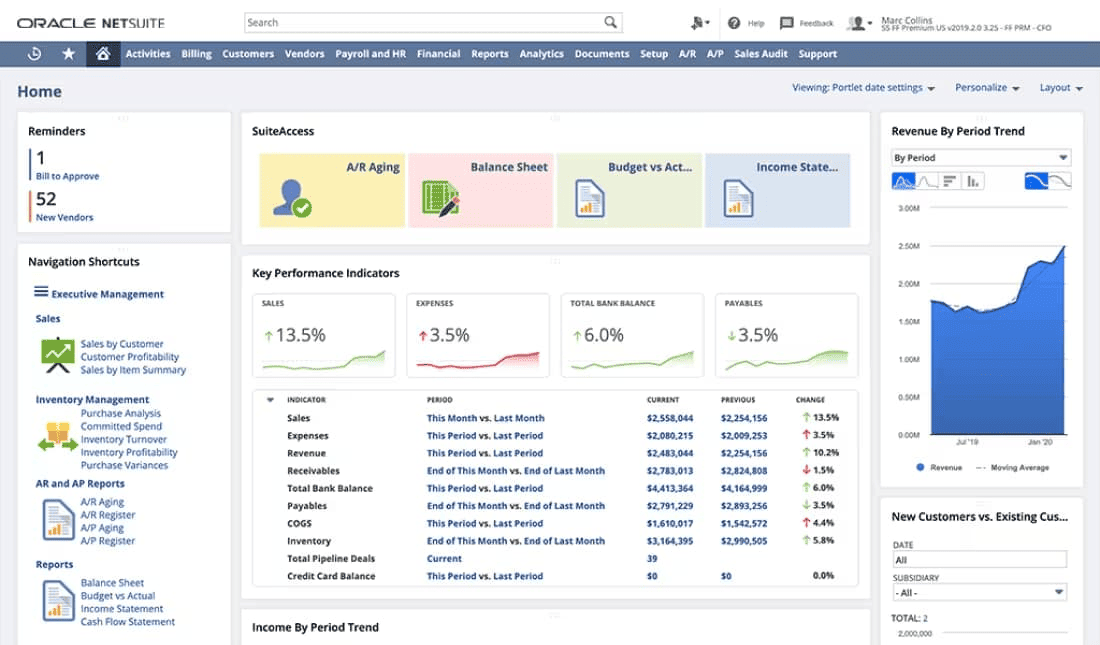
Expand ERP — Overview
![]()
ERP solution for manufacturing, inventory management, and jobwork with a 28‑year history. Expand ERP focuses on clients in the midmarket segment.
| Pros | Cons |
✅ Relatively affordable, 30-day free trial |
❌ The Growth plan turns up quite costly due to the payment per user and limited number of modules & features |
✅ Has iOS & Android apps |
❌ No free plan |
✅ Integrations with Shopify, Shiprocket, WhatsApp, Google Drive |
|
✅ Additional features are available: POS, barcoding, product catalog, sales & purchase planning, marketplace fulfillment |
|
✅ GST, balance sheet and P&L |
Available Plans
Growth
₹ 1,800/$20 per user per month (annual payment)
Inventory Management Module
Accounting Module
Lead Management Module
Order Management Module
Procurement Module
Premium
₹ 2,500/$30 per user per month (annual payment)
Growth Modules
Batch Tracking
MRP
BOM Management
Multi-Level Approval Processes
Elite
₹ 3,400/$40 per user per month (annual payment)
Premium Modules and Features
Workflow Customization
Payroll System
HR Management App
WMS
Advanced Business Analytics
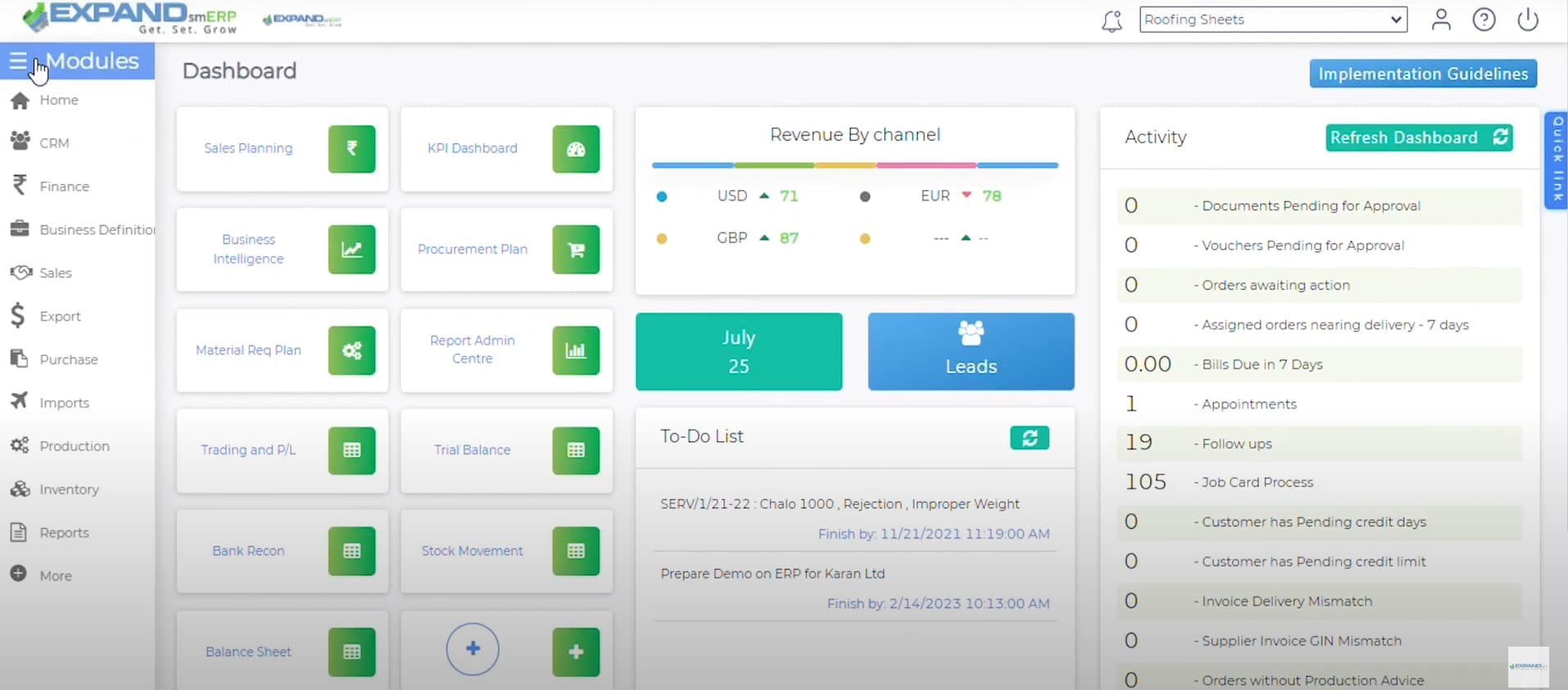
Tranzact — Overview
![]()
ERP software for manufacturers which automates inventory, production & orders. Tranzact founders are IIT graduates who decided to help Indian business people digitize their companies.
| Pros | Cons |
✅ A proper solution for those who produce goods |
❌ Expensive |
✅ Supports E-way bills & GST |
❌ Designed for manufacturers mostly and isn’t the best solution for wholesalers, retailers, etc. |
✅ Has integration with Tally, AfterShip & Whatsapp |
❌ The Customer Relationship Management (CRM) features are considered basic, requiring manual work and lacking advanced automation capabilities |
✅ Provides MRP reports |
❌ There have been mentions of difficulties in importing and exporting data, particularly concerning custom fields in inventory, which can affect data management efficiency |
✅ Subcontracting module, WIP & scrap counting |
|
✅ Work order management |
|
✅ Support is available even for the free plan |
Available Plans
Micro Plan
Free
Up to 5 users
30 transactions/month
10+ reports
Advanced lead management
Small Plan
₹5,000/$59 per month
Up to 5 users
Unlimited transactions
15+ automatic alerts
Single-level BOMs
Single-step production
Business Intelligence
Medium Plan
₹15,000/$176 per month
Up to 10 users
65+ reports
E‑Invoicing
MRP
Multi-step BOM
Production Costing
Routing and Sub-Contracting
Advanced Access Management and Approvals
Enterprise Plan
₹30,000/$352 per month
15+ users
Batch tracking
Ecommerce Integration
Custom API Integrations
IP Whitelisting
Quarterly business review via dedicated CSM

Zoho One — Overview
![]()
All-in-one software that combines different business management modules: sales, marketing, HR, finance, and inventory. Moreover, Zoho can also offer some extra modules such as contact centre, workspace, legal, project management, etc. Software with a 27-year history is well-known and trustworthy.
| Pros | Cons |
✅ Has almost all necessary modules apart from production |
❌ Expensive |
✅ Multiple integrations with Slack, Zapier, Mailchimp, Survey Monkey, Xero, etc. |
❌ Isn’t suitable for manufacturers |
✅ 30-day free trial |
|
✅ Free support and training are available as online, as offline |
Available Plans
Free
No free plan.
All Employee Pricing
$52/monthly per employee
$512/annually per employee
Flexible User Pricing
$121/monthly per user
$1,244/annually per user
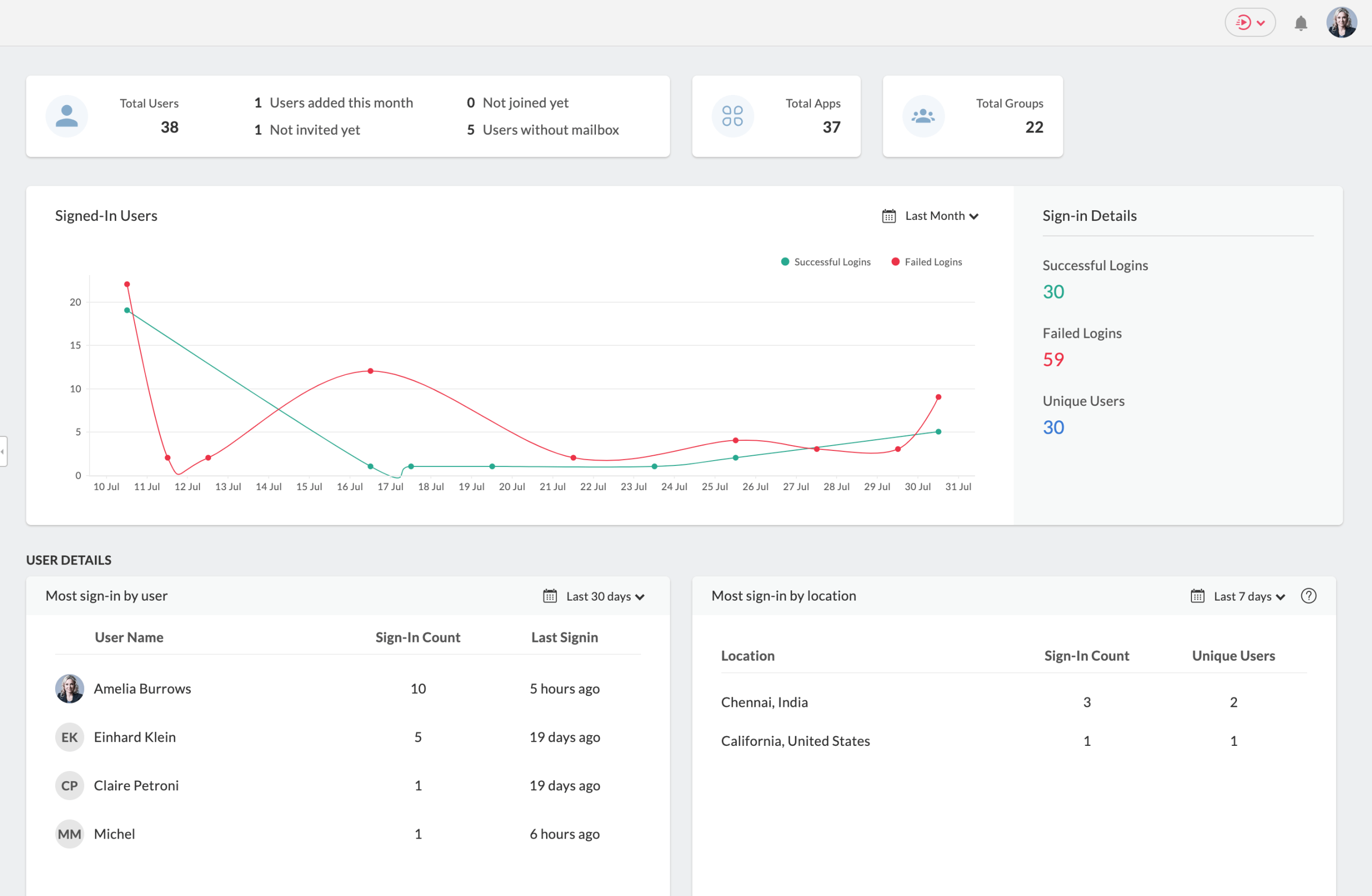
Acumatica — Overview
![]()
Cloud software designed for midmarket businesses with a 15-year history. Has most of the basic modules needed for SMEs. Also, Acumatica pursues an ecological environmental mission.
| Pros | Cons |
✅ One can choose where to store their data — on a public cloud or a private one |
❌ Presumably costly due to Acumatica doesn’t disclose info on pricing publicly |
✅ Finance module provides accounting & banking as well |
❌ Acumatica primarily caters to businesses in the U.S. and U.K., with limited support for multi-currency and multi-language operations, which can be a drawback for companies with international operations |
✅ Solutions for service industries, construction, retail, etc. |
❌ Some users have reported issues with customer support, including slow response times and challenges in resolving complex issues, which can be frustrating when problems arise |
✅ Integrations with Shopify, DocuSign, PayPal, Amazon, etc. |
|
✅ Provides support for all clients & partners via calls, messengers, or emails |
Available Plans
Free
No free plan is available.
Price
One must fill in the form to get a tailored pricing offer based on the features & resources needed. Mainly, the cost depends on the number of apps you’re going to implement. Acumatica claims that it grants access to an unlimited number of users in a company.
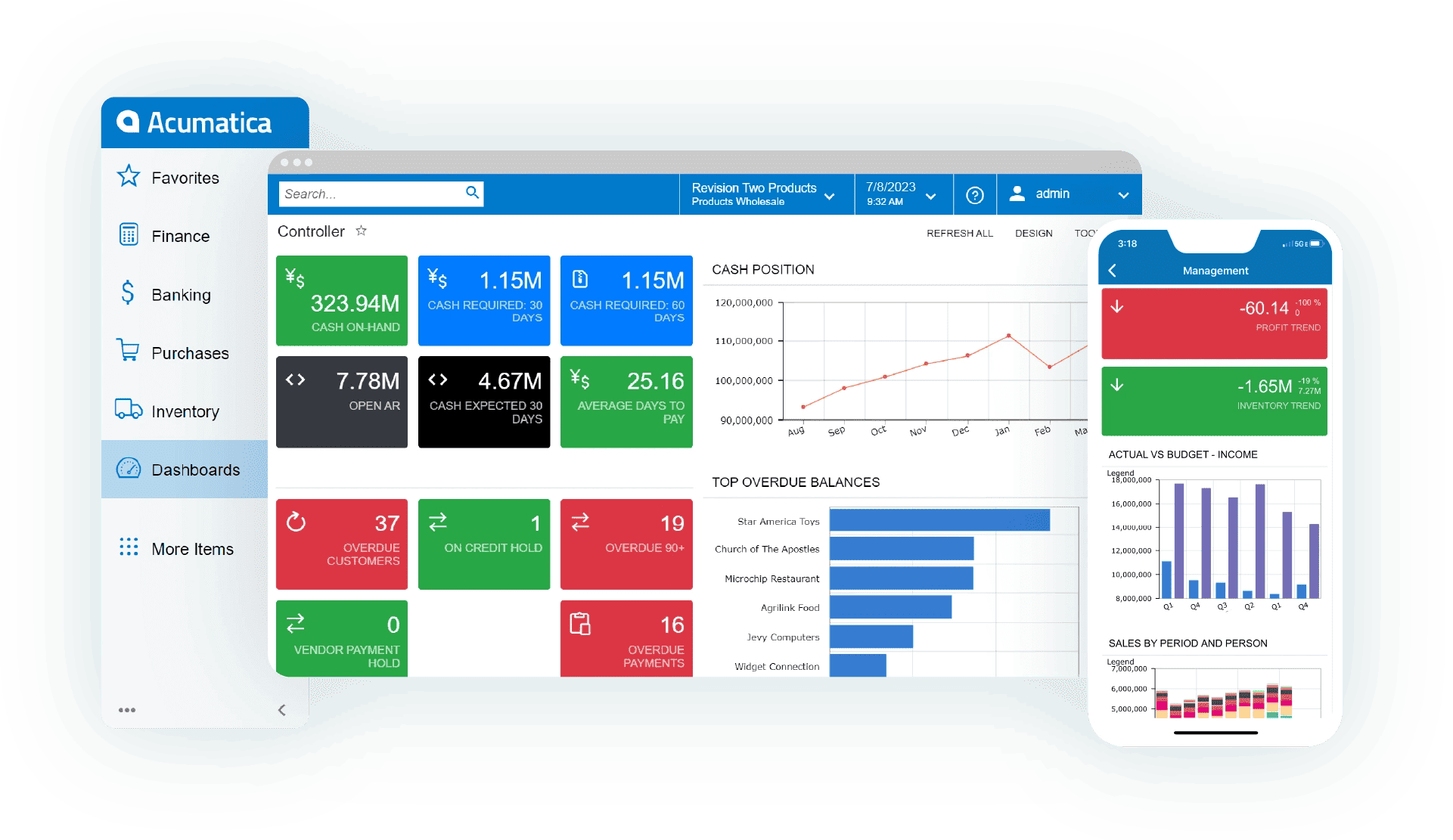
Ginesys — Overview
![]()
Cloud suite designed for retailers, wholesalers & D2C brands.
| Pros | Cons |
✅ Inventory management for online & offline retail |
❌ Expensive |
✅ Apart from the marketing module, has loyalty & promotion features |
❌ Generating reports in Ginesys ERP can be cumbersome, with users finding the reporting features less user-friendly |
✅ B2B sales, shop-in-shops & franchisees for wholesalers |
❌ Some users have reported delays in receiving support, with issues taking days to resolve, impacting business operations |
✅ E-invoicing, E-waybills, GST returns |
|
✅ Integrations with Shopify, Flipkart, Amazon, etc. |
|
✅ Solutions for various segments: fashion & lifestyle brands, supermarkets & convenience stores |
Available Plans
Free
No free plan is available.
HO User
₹7,000/$72 per user per month
Production / Finance
₹6,000/$62 per month
Additional Company
₹2,000/$24 per month
Mind that subscription is available on a quarterly basis, and one has to pay for 3 users minimum. For the implementation, one has also to pay an extra fee.
Some modules are extra-chargeable:
- POS — ₹3,500/$41 per month
- GST — ₹1,500/$18 per month
- Web & mPOS — ₹4,000/$47 per month
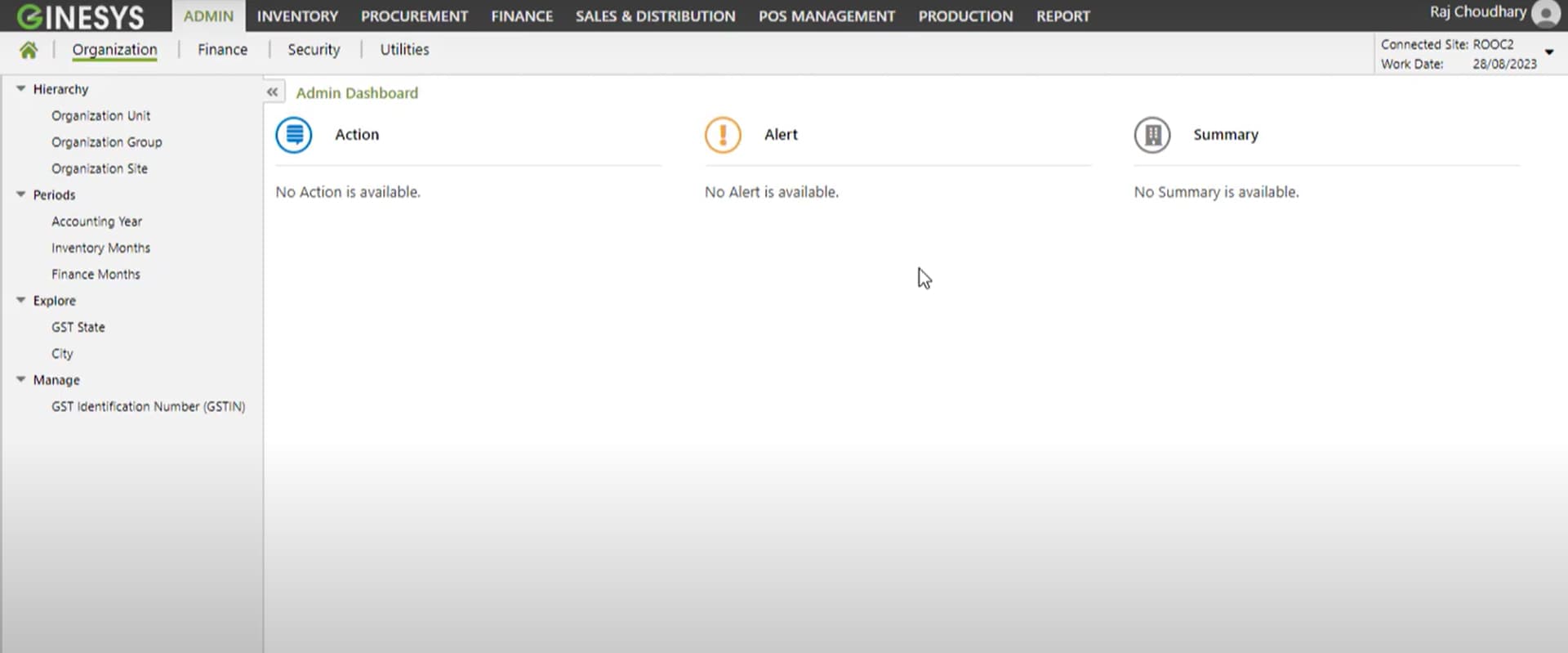
Sage 300 — Overview

42-year-old software for accounting, inventory & order management which offers multiple in-depth reports & dashboards. Sage 300 is a business management ecosystem suitable for international companies: it supports multi-currency and is multilingual. In 2015, Sage 300 founded Sage Foundation which helps non-profit organizations.
| Pros | Cons |
✅ Almost all modules apart from marketing are available |
❌ No data on pricing |
✅ Integrations with PayPal, Stripe, Microsoft Azure, Zapier, Shopify, etc. |
❌ The user interface is considered outdated and not very intuitive, which can make navigation difficult for new users |
✅ Has solutions for different industries: construction, real estate, hospitality, healthcare, etc. |
Available Plans
No data
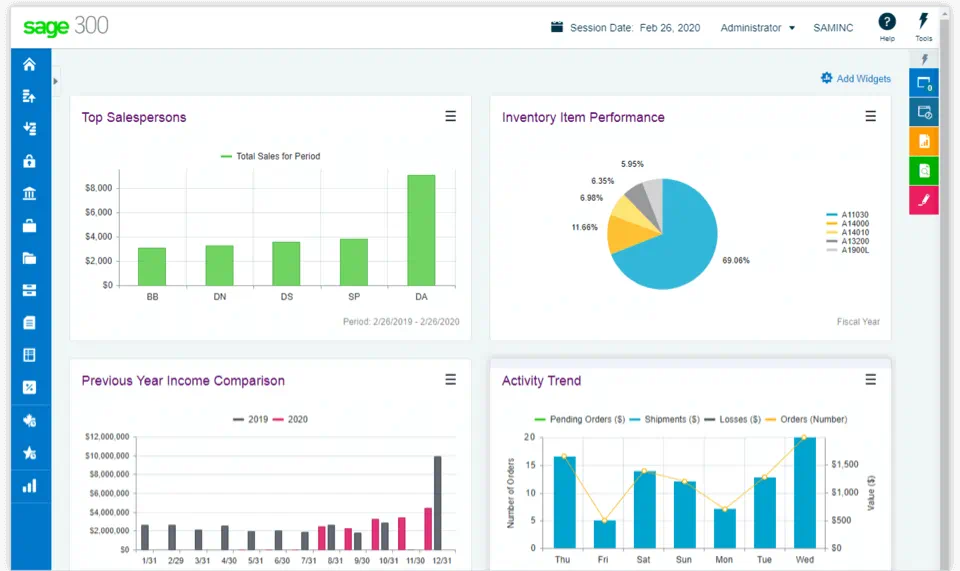
Deskera — Overview
![]()
Easy-to-handle software that has almost all the modules & integrations that you can only imagine. However, only large corporations can afford it due to its high price. Apart from ERP, Deskera also offers MRP. The software is 15 years old and is considered to be one of the leaders among SaaS solutions.
| Pros | Cons |
✅ Provides an extensive set of modules |
❌ Extremely expensive |
✅ Integrations with Amazon, Shipstation, Shopify, Stripe, PayPal, etc. |
❌ Users have reported delays in receiving support, with issues taking days to resolve, impacting business operations |
✅ Free mobile app is available |
❌ Users have noted difficulties with data entry and editing, including issues with fixed asset depreciation and transaction immutability |
Available Plans
Free
No free plan is available.
Growth
From $995/monthly
5+ users
Accounting
CRM
Warehousing
Mid Market
From $1,245/monthly
5+ users
Time tracking
Landed costs
Report builder
Enterprise
Custom price
50+ users
Multi-book accounting
Custom dashboards & reports
Custom integrations
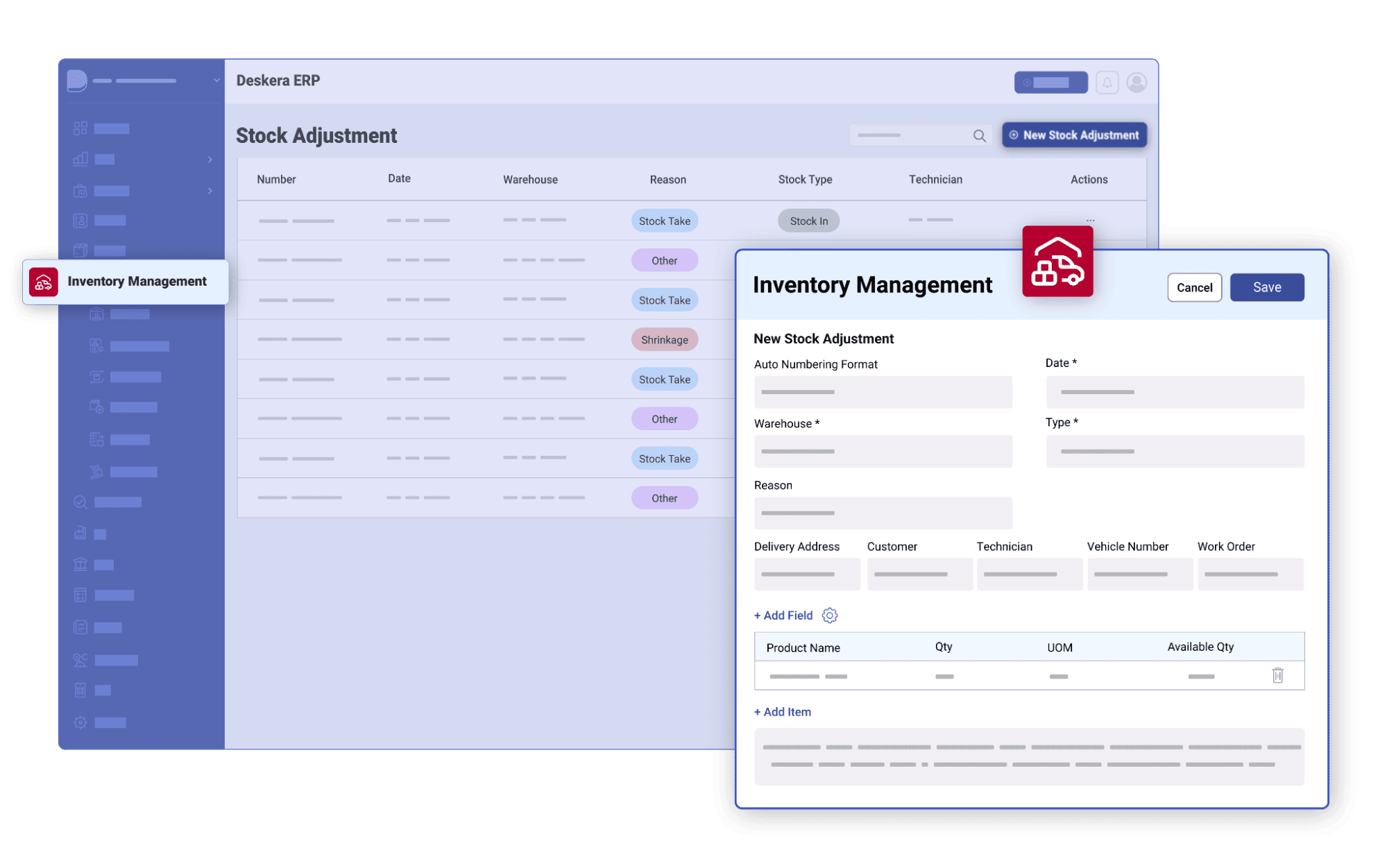
Focus ERP — Overview
![]()
Focus claims that they offer postmodern AI-powered ERP that is beyond old-school solutions. The history of Focus dates back to 1992 when it was a small IT company. Nowadays, it operates in 17 countries around the world. Focus complies with regional tax regulations. The implementation of the ERP software is promised within 30 days.
| Pros | Cons |
✅ Solutions for various industries: automotive, construction, education, cleaning, field service, etc. |
❌ No fixed plans that mean high costs, presumably |
✅ The production module is focused on MRP |
|
✅ Offers a POS system |
|
✅ AI-driven apps: artificial intelligence and machine learning are used to make real-time insights, improve workflows & find suitable custom solutions |
|
✅ Has basic modules plus additional ones: contract management, equipment maintenance, project costing |
|
✅ Issues a periodical called Focal Point |
Available Plans
- No free module
- Annual license
The fee is not fixed. It depends on the number of users, modules, locations & integrations.

IFS — Overview
![]()
Contemporary software which uses AI, machine learning & other modern technologies and allows a customer to build their own ERP system by buying only necessary modules — like Lego bricks.
| Pros | Cons |
✅ Additional modules: project, asset & service management |
❌ Prices are not publicly disclosed |
✅ Solutions for multiple industries: construction, energy, utilities, engineering, aerospace, etc. |
❌ IFS primarily caters to businesses in certain regions, with limited support for multi-currency and multi-language operations, which can be a drawback for companies with international operations |
✅ Integrations through API, low-code customization |
❌ Some users have reported issues with customer support, including slow response times and challenges in resolving complex issues, which can be frustrating when problems arise |
✅ Cloud & on-premise solutions |
Available Plans
No data
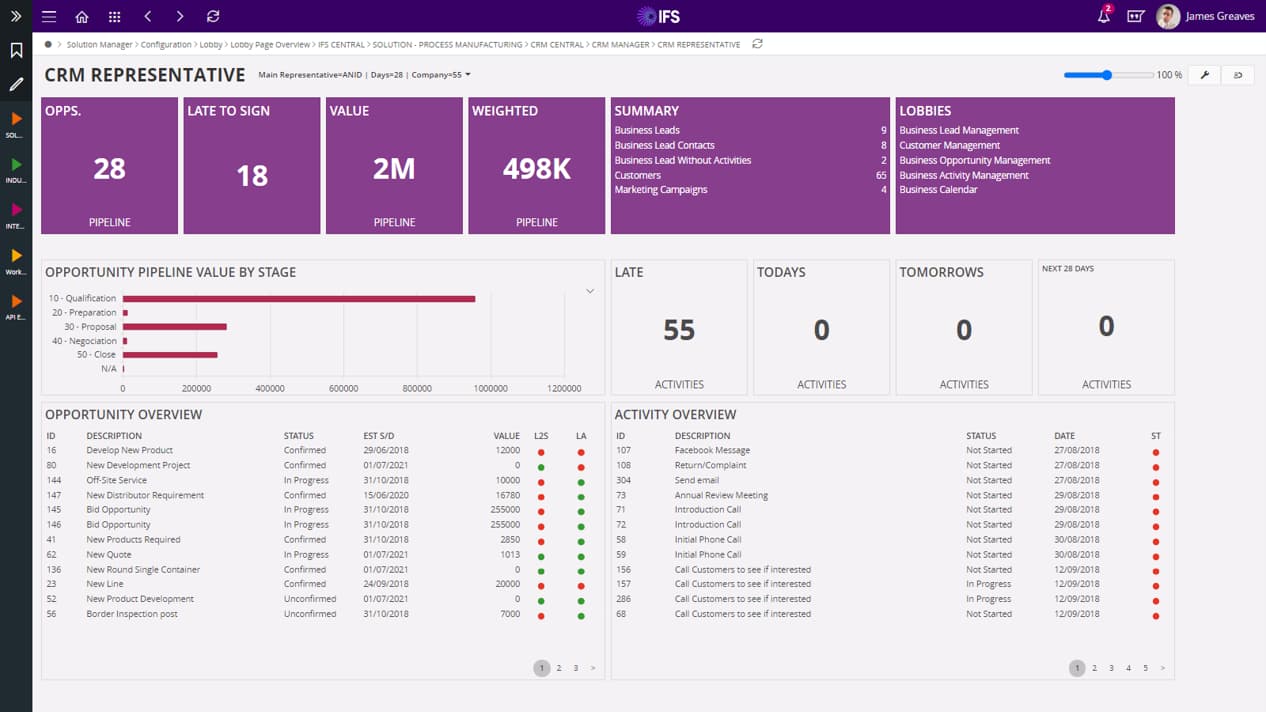
Marg — Overview
![]()
31-year-old inventory & accounting software designed for MSMEs. Focuses on pharma & FMCG trade. Also, Marg provides educational courses for pharmacy workers, accountants, etc.
| Pros | Cons |
✅ Solutions for various industries: pharma, food, textile, FMCG, salon, etc. |
❌ No cloud version, desktop & mobile applications (Android) must be downloaded, as well as all patches. Although there’s cloud backup stored in Google. Marg ERP Cloud offers extra cloud cost per user (₹7,500–10,800 / $88–127). |
✅ GST compliant, e‑way billing & e‑invoicing |
❌ Outdated interface which is not user-friendly |
✅ Relatively affordable |
|
✅ Lots of handy modules are available |
Available Plans
Free
The free version can be downloaded.
Marg ERP Nano
₹5,400
₹2,340 — Annual Renewal Cost
450 bills/month
Basic Edition
₹9,999/$350
₹3,870/$120 — Annual Renewal Cost
1 user with full rights
2 users maximum
2 companies maximum
₹3,000/$150 — an extra user
₹3,000 — an extra company
Silver Edition
₹13,500/$600
₹4,640/$210 — Annual Renewal Cost
1 user with full rights
1 user for view only
₹3,000/$150 — an extra user
₹3,000 — an extra company
Gold Edition
₹25,200/$1,150
₹9,270/$400 — Annual Renewal Cost
(up to 25 users / 25 extra companies)
₹18,540/$800 — Annual Renewal Cost (unlimited users / extra companies)
Unlimited users
Unlimited companies
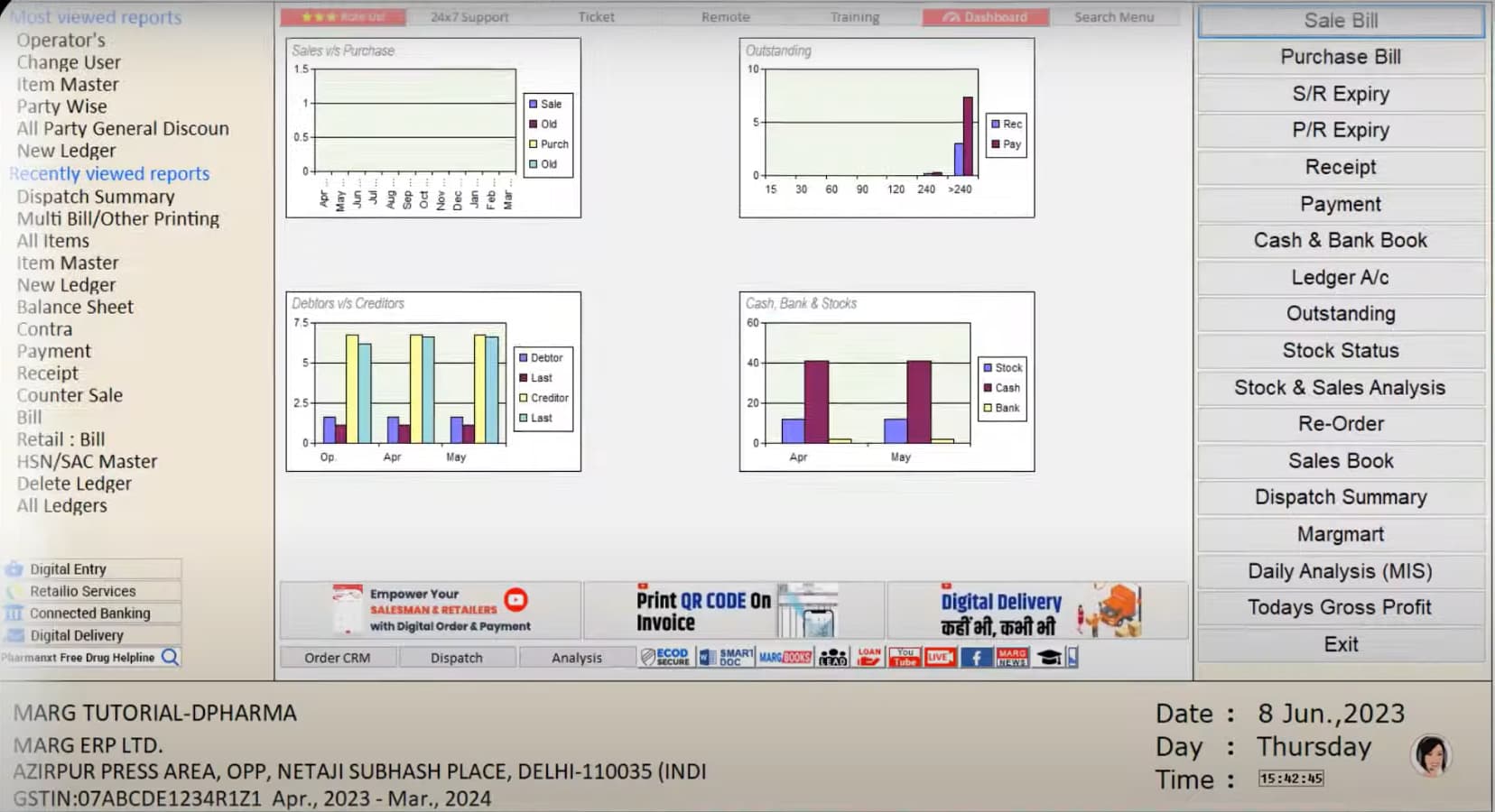
Microsoft Dynamics 365 — Overview
![]()
A brand that needs no introduction. Dynamics 365 offers modular, prebuilt business apps.
| Pros | Cons |
✅ Free 30-day trial |
❌ Expensive — each module has its own price |
✅ Offers additional modules such as customer service |
❌ Suits large companies rather than SMEs |
✅ Integrations with other products: Microsoft Team, Power BI, Power Automate, LinkedIn Sales Navigator, etc. |
❌ Organizations adopting Microsoft Dynamics 365 may experience vendor lock-in, making it challenging to switch to a different ERP solution in the future |
✅ One can use any type of deployment: cloud, on-premise, or hybrid |
|
✅ The support team gives the feedback within two days |
Available Plans
Free
No free plan is available
Business Central Essentials
From $70 (per user)/monthly
Business Central Premium
From $100 (per user)/monthly
Modules are extra-chargeable:
- sales — from $65 (per user)/monthly
- finance — from $210 (per user)/monthly
- customer service — from $50 (per tenant)/monthly
- supply chain — from $210 (per user)/monthly
- HR — from $135 (per user)/monthly
- commerce — from $210 (per user)/monthly.
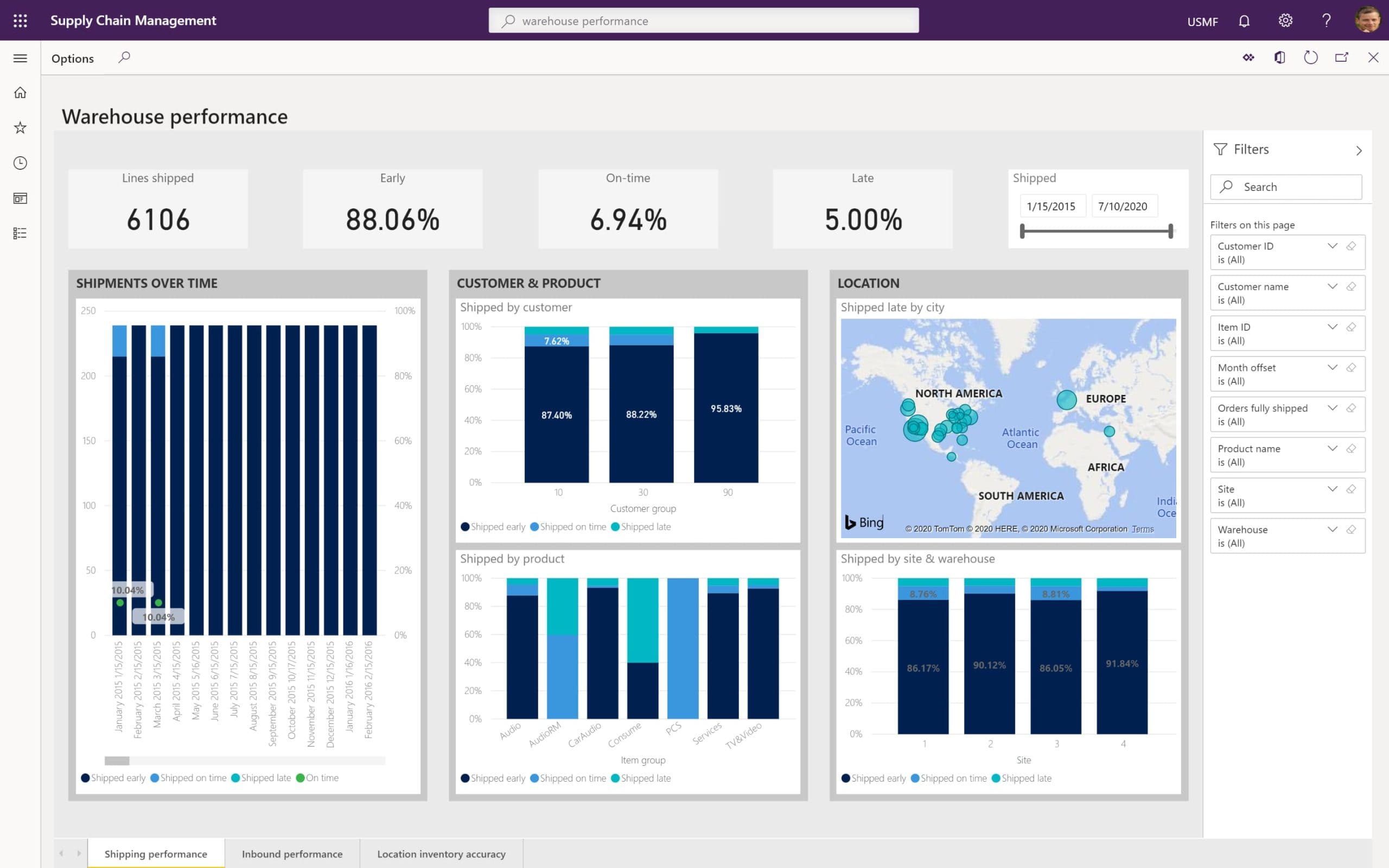
Eresource — Overview
![]()
ERP products for manufacturers, traders & distributors with a focus on multiple industries. Eresource is a company with a 17-year history working in Canada, India, UAE, Qatar & other countries.
| Pros | Cons |
✅ Affordable: from ₹1,999/$24 per month |
❌ Some organizations have experienced extended implementation periods, which can delay the realization of benefits and increase project costs |
✅ Solutions for various industries: fleet, construction, rentals, maintenance, logistics, etc. |
❌ Users have noted that while the system is customizable, the process for implementing requested enhancements can be slow, sometimes taking years |
✅ Android & iOS apps are available |
|
✅ Suits all types of businesses from a startup to a large enterprise |
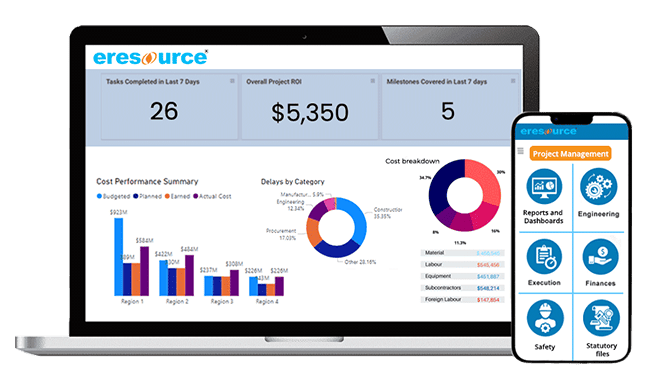
Tech Cloud ERP — Overview
![]()
Company with a 14-year experience supports multiple solutions.
| Pros | Cons |
✅ Offers additional modules such as asset management, plant maintenance, quality check, POS, etc. |
❌ Prices are not disclosed |
✅ Inbuilt email and SMS integration |
❌ Storing sensitive business data on the cloud introduces concerns about data security and compliance with regional regulations. Companies must ensure that Tech Cloud ERP’s security measures align with their industry’s compliance requirements |
✅ Solutions for various industries: agriculture, electronics, chemical, leather, wood, FMCG, etc. |
❌ Transitioning away from Tech Cloud ERP to another platform in the future might be challenging due to data migration complexities and potential contractual obligations, leading to vendor lock-in scenarios |
Available Plans
Free
No free plan is available
Price plans
Prices are available on request.
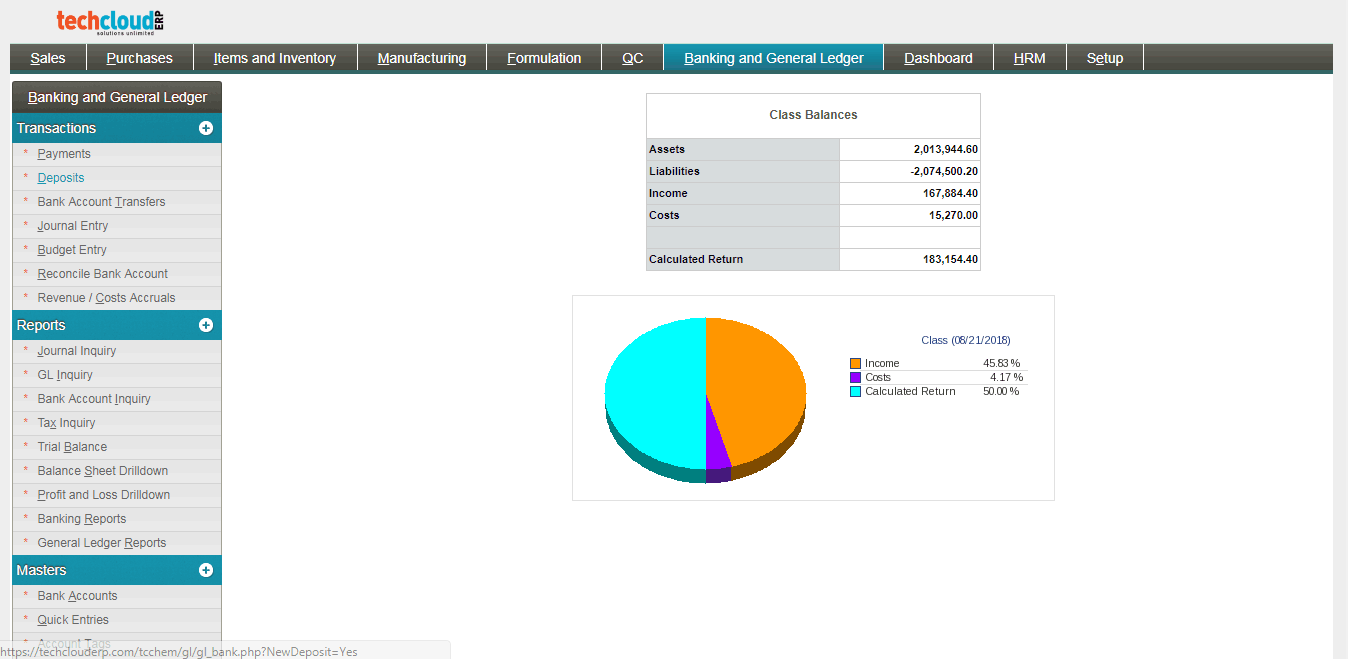
Ramco — Overview
![]()
Being a company with 26 years of history, Ramco claims that an innovative approach & usage of up-to-market technology is what differentiates this software from its competitors.
| Pros | Cons |
✅ Solutions for various industries: aviation, logistics, energy, rental, contract workforce, etc. |
❌ Prices are not disclosed publicly |
✅ Extra modules are available: enterprise asset management, project management, and quality management |
❌ Outdated interface that doesn’t seem to be user-friendly |
❌ Limited out-of-the-box integrations can lead to increased implementation time and costs |
|
❌ Users have reported delays in receiving support, with issues taking days to resolve, impacting business operations |
Available Plans
No data.
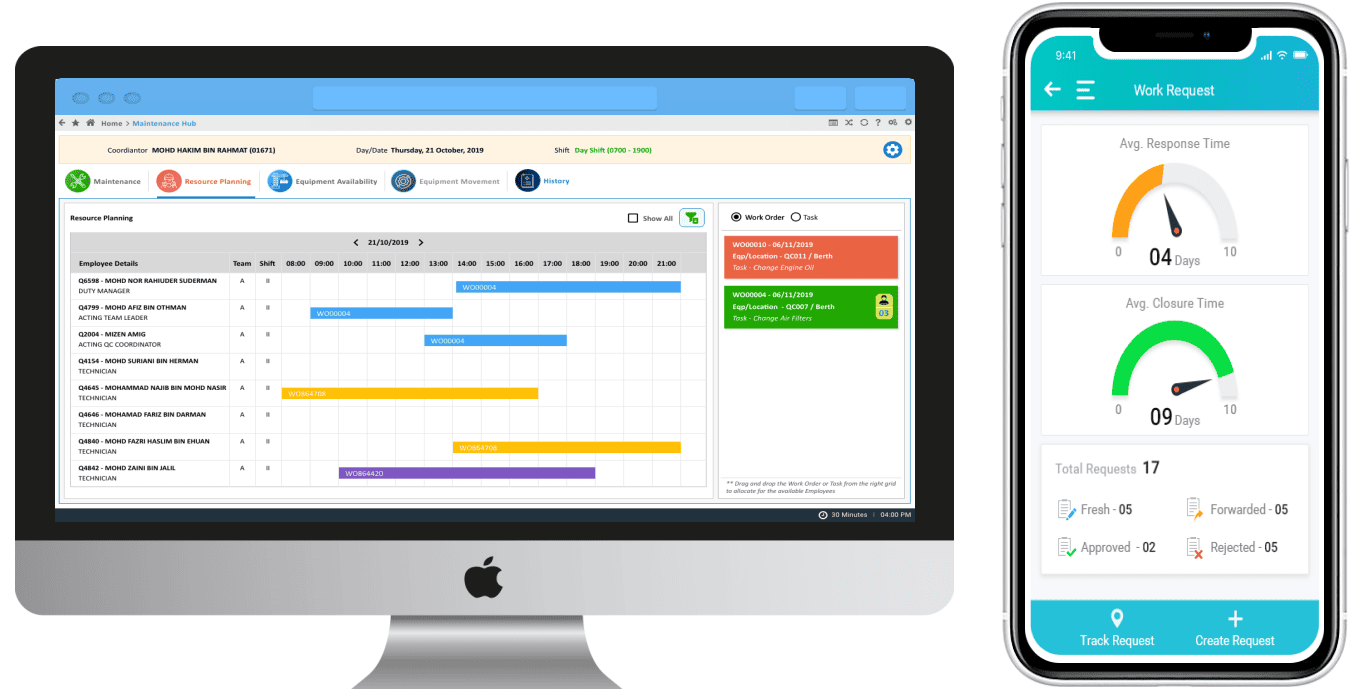
PACT ERP — Overview
![]()
PACT ERP is a 25-year-old company that claims that its software is highly customizable to meet the needs of different clients.
| Pros | Cons |
✅ On-premise & cloud solutions |
❌ Prices are not publicly disclosed |
✅ VAT/GST, tax complian |
❌ Some users have noted that the extensive customization options can lead to over-complexity, making the system harder to manage and navigate |
✅ Provides an impressive range of modules |
❌ The implementation of PACT ERP can be complex and time-consuming, often requiring experienced ERP consultants or internal IT resources |
✅ Extra modules are available including asset management, POS, online store, project management, property management, van sales, etc. |
|
✅ Solutions for various industries: construction, automotive, real estate, services, etc. |
|
✅ Operates in India, USA, Saudi Arabia, Qatar, Kenia, and Bahrain |
Available Plans
Prices are unknown
Free
No free plan is available
PACT RevenU Express
For small businesses
PACT RevenU Standard
For medium-sized businesses
PACT RevenU Enterprise
For large-scale businesses
PACT Cloud
Cloud solution
TallyPrime — Overview
![]()
37-year-old invoicing & accounting software that has ERP features. Designed for SMBs.
| Pros | Cons |
✅ Hybrid solution which needs to be installed on PCs or LAN environment and can be accessed from any mobile device |
❌ Expensive |
✅ Free human support via phone & email |
❌ Outdated interface |
✅ Personalized reports |
❌ Is more useful for accounting & billing rather than inventory & production management |
✅ Provides additional level of security — TallyVault which encrypts all data |
|
✅ Integrations & customization using Tally Definition Language |
|
✅ Supports multi-currency & multiple billing format |
|
✅ Banking module & cheque management are also available |
Available Plans
No Free Plan
Silver
$630/perpetual
1 user — 1 PC.
Gold
$1,890/perpetual
Unlimited users — PCs or LAN environment.
From the second year onward, TSS renewal is required to access services: $126–378 for one year or $227–680 for two years. Also, TallyPrime Developer is extra-chargeable — $360–1,080/annually. TallyPrime Server costs $9,450.
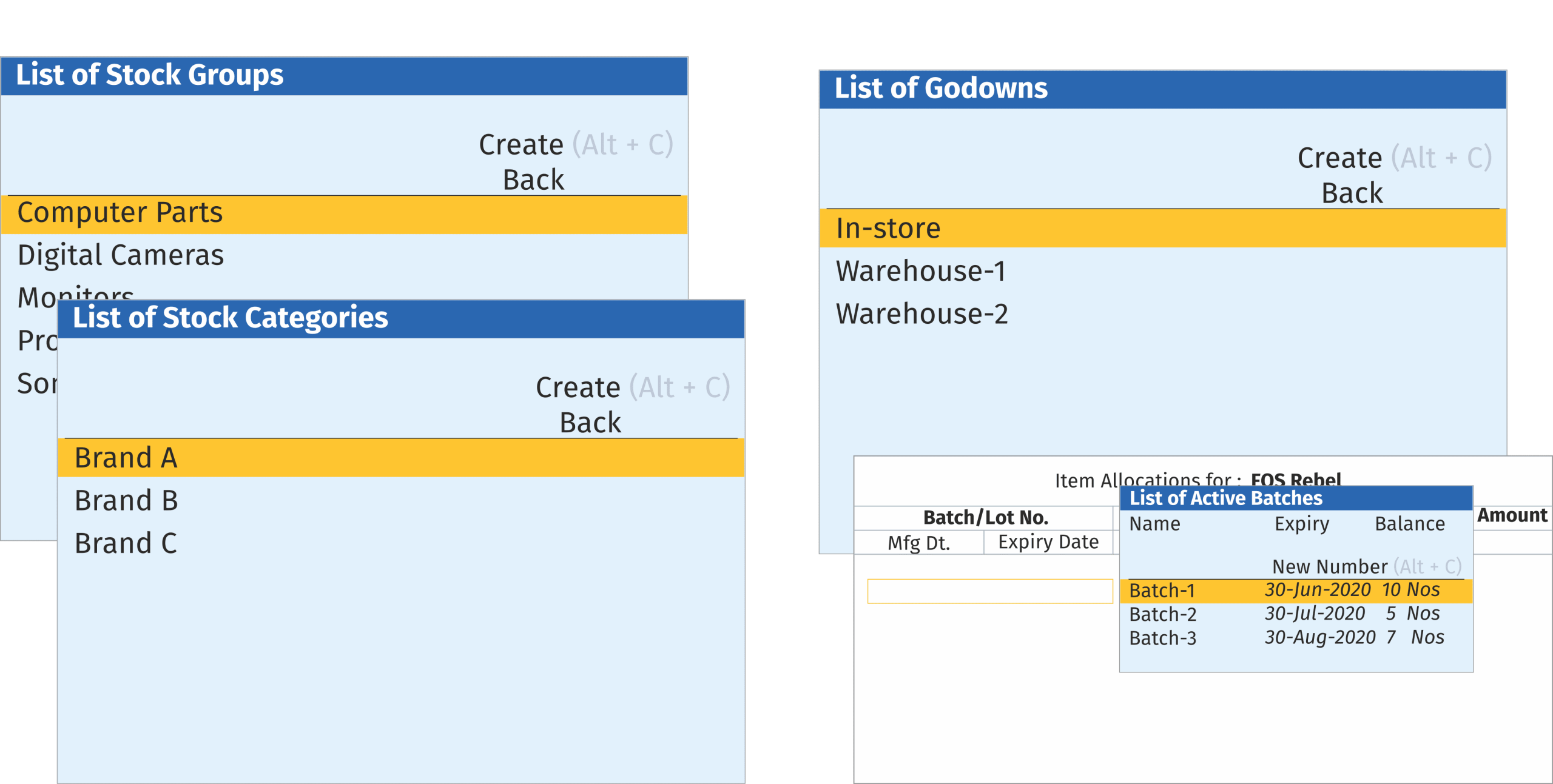
Best Cloud-Based ERP Solutions for Indian SMEs
Here we collected the top 10 ERP systems with the highest ratings:
| Software Name | Overall Score |
Kladana |
⭐⭐⭐⭐⭐ (5.0) |
ERPNext |
⭐⭐⭐⭐ (4.8) |
Odoo |
⭐⭐⭐⭐ (4.7) |
NetSuite ERP |
⭐⭐⭐⭐ (4.7) |
Expand ERP |
⭐⭐⭐⭐ (4.6) |
Tranzact |
⭐⭐⭐⭐ (4.6) |
Zoho One |
⭐⭐⭐⭐ (4.6) |
Acumatica |
⭐⭐⭐⭐ (4.6) |
Ginesys |
⭐⭐⭐⭐ (4.5) |
Sage 300 |
⭐⭐⭐⭐ (4.5) |
Top Budget-Friendly ERP Software for Indian SMEs (2025)
Here’s the shortlist of 10 most affordable ERPs in India (those with pricing plans published in open sources):
| Software Name | Price (Yearly) |
Kladana |
$60–748 |
ERPNext |
$60–2,400+ |
Odoo |
$345–517+ per user |
Expand ERP |
$240–480 per user |
Tranzact |
$705–4,227 |
Zoho One |
$512–1,244 per user |
Marg |
$350–1,150 perpetual + Annual Renewal Cost $120–800 |
Microsoft Dynamics 365 |
$840–1,200 per user |
Eresource |
$282+ |
TallyPrime |
$630–1,890 perpetual + Annual Renewal Cost $113–378 |
Which ERP Systems Support GST, E-Invoicing, and Indian Tax Compliance?
Check out the list of solutions that support GST compliance both independently and through integrations:
| Software Name | Price (Yearly) | Overall Score |
Kladana |
$60–748 |
⭐⭐⭐⭐⭐ (5.0) |
ERPNext |
$60–2,400+ |
⭐⭐⭐⭐ (4.8) |
Odoo |
$345–517+ per user |
⭐⭐⭐⭐ (4.7) |
NetSuite ERP |
No data |
⭐⭐⭐⭐ (4.7) |
Expand ERP |
$240–480 per user |
⭐⭐⭐⭐ (4.6) |
Tranzact |
$705–4,227 |
⭐⭐⭐⭐ (4.6) |
Zoho One |
$512–1,244 per user |
⭐⭐⭐⭐ (4.6) |
Acumatica |
No data |
⭐⭐⭐⭐ (4.6) |
Ginesys |
$864+ per user |
⭐⭐⭐⭐ (4.5) |
Sage 300 |
No data |
⭐⭐⭐⭐ (4.5) |
Deskera |
$11,940–14,940+ |
⭐⭐⭐⭐ (4.5) |
Focus |
No data |
⭐⭐⭐⭐ (4.4) |
IFS |
No data |
⭐⭐⭐⭐ (4.4) |
Marg |
$350–1,150 perpetual + Annual Renewal Cost $120–800 |
⭐⭐⭐⭐ (4.3) |
Microsoft Dynamics 365 |
$840–1,200 per user |
⭐⭐⭐⭐ (4.3) |
Eresource |
$282+ |
⭐⭐⭐⭐ (4.2) |
Tech Cloud ERP |
No data |
⭐⭐⭐⭐ (4.1) |
Ramco |
No data |
⭐⭐⭐⭐ (4.1) |
PACT ERP |
No data |
⭐⭐⭐⭐ (4.0) |
TallyPrime |
$630–1,890 perpetual + Annual Renewal Cost $113–378 |
⭐⭐⭐ (3.8) |
Frequently Asked Questions on the Best ERP Software in India
Still wondering whether the best ERP software in India fits your business? These commonly searched questions and answers will help you decide, covering everything from ERP tools lists to ERP solutions for small businesses and ERP companies in India.
What is ERP software, and what are ERP tools used for?
ERP (Enterprise Resource Planning) software integrates core business processes — such as inventory, production, finance, HR, sales, and procurement — into a single system. It’s designed to improve efficiency, provide real-time data, and support better decision-making across departments. ERP tools help streamline operations and provide a centralized view of your business.
What are the main ERP modules in top ERP software in India?
Although ERP systems in India vary, the most commonly used modules in the top ERP software in India include:
- Inventory Management: Tracks stock, batches, and movement across multiple warehouses;
- Warehouse Management: Controls layout, picking, storage bins, and fulfillment speed;
- Order Management: Links sales and inventory to track orders from quote to delivery;
- Manufacturing: Handles bills of materials (BoM), production planning, and cost estimation;
- CRM (Customer Relationship Management): Manages customer data, leads, sales funnels, and feedback.
What types of ERP solutions exist, and what are the differences?
- On-premise ERP: Installed locally and managed in-house, offering more control but requiring IT infrastructure;
- Cloud-based ERP: Hosted online, accessed via a browser or app, providing flexibility and scalability;
- Hybrid ERP: Combines on-premise control with cloud flexibility, allowing for customization and data control.
Can small businesses use ERP solutions for small businesses?
Absolutely. ERP solutions for small businesses help automate tasks, reduce manual errors, and scale faster. With modular pricing and cloud deployment, ERP is no longer exclusive to enterprises. Many ERP companies in India offer solutions tailored to small and medium-sized enterprises (SMEs).
How do I choose the best ERP software in India for my business?
Evaluate:
- Must-have features for your operations (e.g., stock control, production);
- Scalability and integration options;
- Pricing (including hidden costs) and value for money;
- Free trial availability and demos;
- Real reviews from businesses like yours;
- Localization for India, including GST compliance and regional support.
What are the steps in ERP implementation for ERP systems in India?
- Define goals and evaluate workflows;
- Choose your ERP software in India and vendor from the ERP tools list;
- Prepare a project roadmap and assign roles;
- Import and clean up legacy data;
- Test modules and integrate systems;
- Train staff and go live;
- Monitor performance and optimize.
What is the most common ERP challenge?
The biggest challenges include:
- High implementation costs;
- Data migration errors;
- Employee resistance to change;
- Delayed go-live due to poor planning;
- Lack of adequate support from ERP companies in India.
What are the advantages and disadvantages of ERP systems in India?
Advantages:
- Streamlines operations and boosts productivity;
- Consolidates data and reduces errors;
- Enables smarter forecasting and reporting;
- Grows with your business;
- Ensures GST compliance and localized support for ERP systems in India.
Disadvantages:
- Can be expensive to set up;
- Needs proper training and change management;
- May require customization for industry-specific needs.
Which ERP software is most popular in India?
The most popular ERP software in India often includes solutions with strong local support, GST compliance, and flexibility for various business sizes. This can vary but generally includes solutions offering accounting, inventory, and compliance features suitable for Indian businesses. Referring to updated market analyses and reports from research firms can provide the most current data on this.
What is the best ERP for small businesses?
The best ERP for small businesses is one that is affordable, scalable, and user-friendly. Cloud-based options with modular pricing are often ideal. Key features should include inventory management, accounting, and CRM. Look for solutions that provide good customer support and training. Consider solutions like Kladana, ERPNext, and Zoho One, which are designed for the needs of SMEs.
What is the best free ERP system?
Finding truly “free” ERP systems can be challenging, but some vendors offer a basic or open-source version that may fit initial needs. Odoo offers a single free app. It’s important to note that “free” versions often have limitations, such as limited users, features, or support. However, they can be a good starting point to understand ERP functionality. Look for best free ERP software in India trials with sufficient periods to assess their capability.
What is the best free ERP for manufacturing?
The best ERP for manufacturing includes robust modules for production planning, bill of materials (BOM), job tracking, inventory management, and supply chain. Specific solutions like Tranzact, or those with strong MRP capabilities, are often preferred. Consider solutions with features like work order management, shop floor control, and cost accounting to meet the unique needs of manufacturing businesses.
What are the common mistakes to avoid when choosing an ERP?
- Focusing solely on price: The cheapest option may lack essential features or support, leading to higher costs in the long run.
- Ignoring scalability: Ensure the ERP can grow with your business and accommodate future needs.
- Neglecting user training: Proper training is essential for successful adoption and utilization of the ERP.
- Overlooking customization needs: If your business has unique processes, choose an ERP that allows customization or integrates with other applications.
- Skipping the free trial or demo: Always test the software before committing to a purchase.
- Not checking for GST compliance: For Indian businesses, ensuring the ERP complies with GST regulations is crucial.
List of Resources
- Statista — Enterprise Resource Planning Software — India
- The Times of India — Unleashing the power: The explosive growth of India’s D2C market
- MCKinsey — The direct-to-customer edge: Increasing shareholder value through business building
- The Economic Times — When AI meets cloud ERP: Driving the digital shift in India’s automotive manufacturing
- CDSCO — Selection of Software Services Provider (SSP) for Digital Transformation of Central Drugs Standard Control Organization, IPC & NIB
Read‑alikes
ERP Software Boom: “It’s Becoming a Single Point of Assembly of All Business Processes”
ERP Inventory Management: 12 Benefits for Your Business in Full Guide
6 Key Benefits of ERP Solutions and How They Can Be Used in Favor of Any Business
ERP Digital Transformation: Smarter Systems, Stronger Growth
ERP Trends Shaping AI, Cloud Expansion, and Industry Innovation

